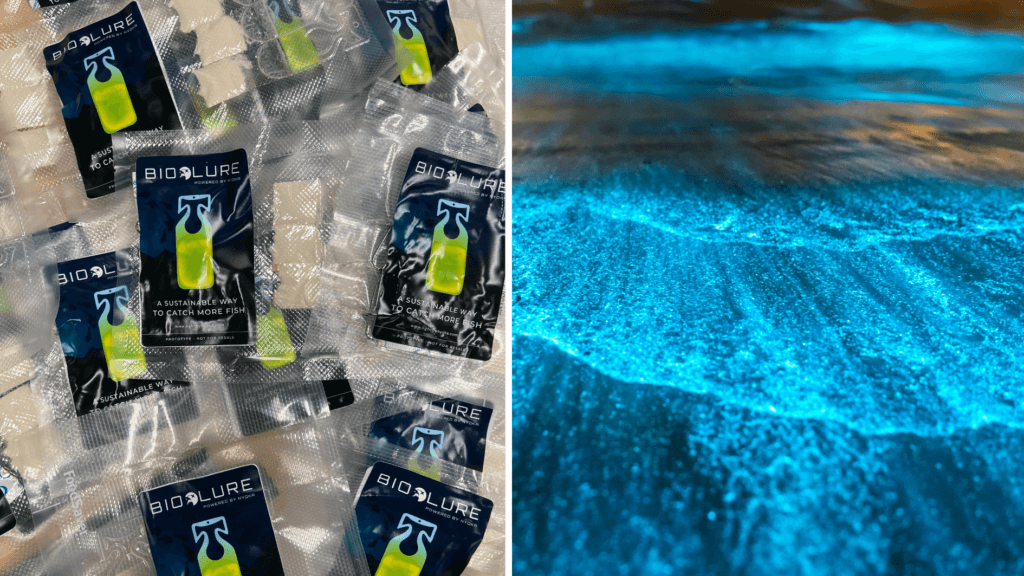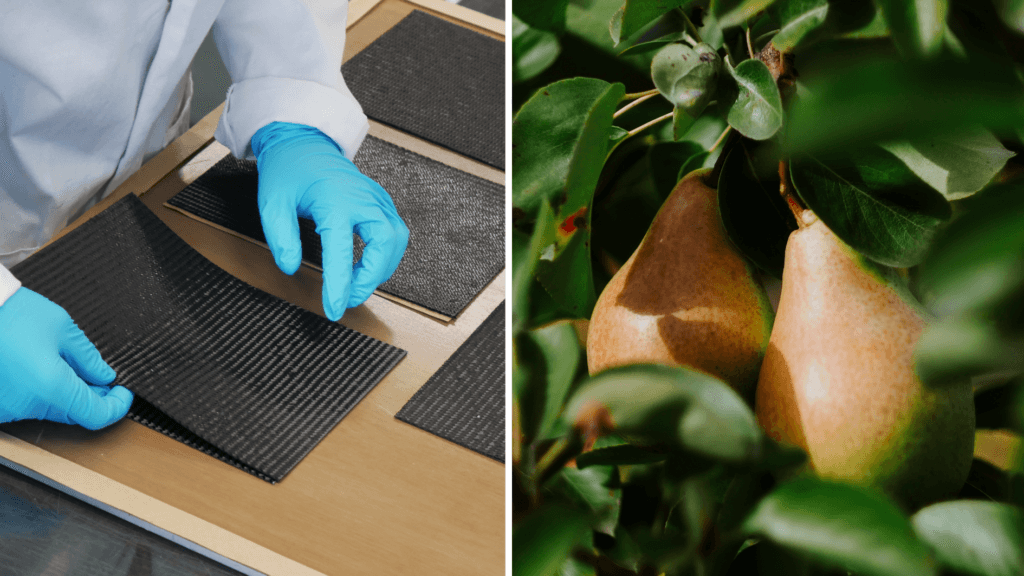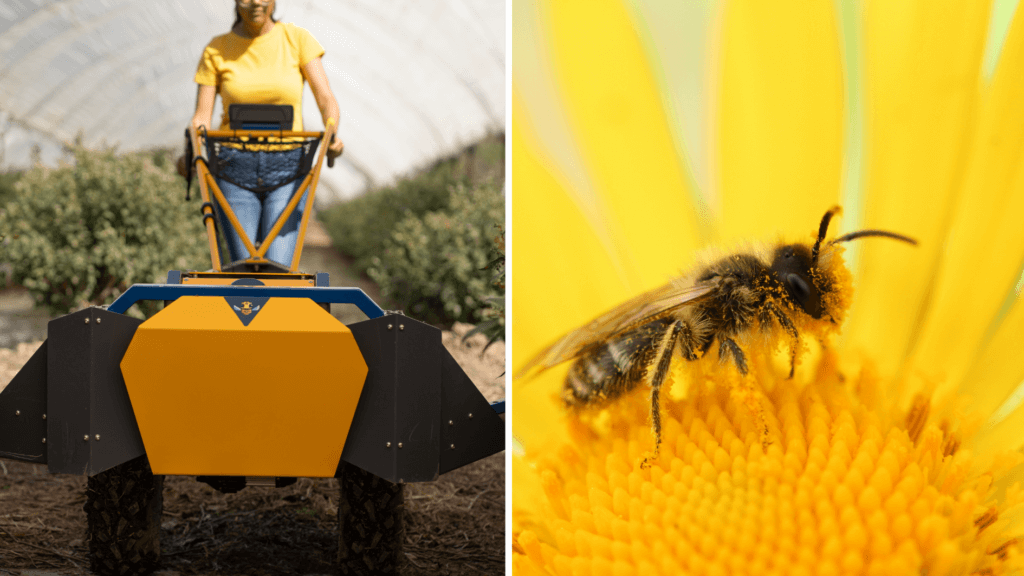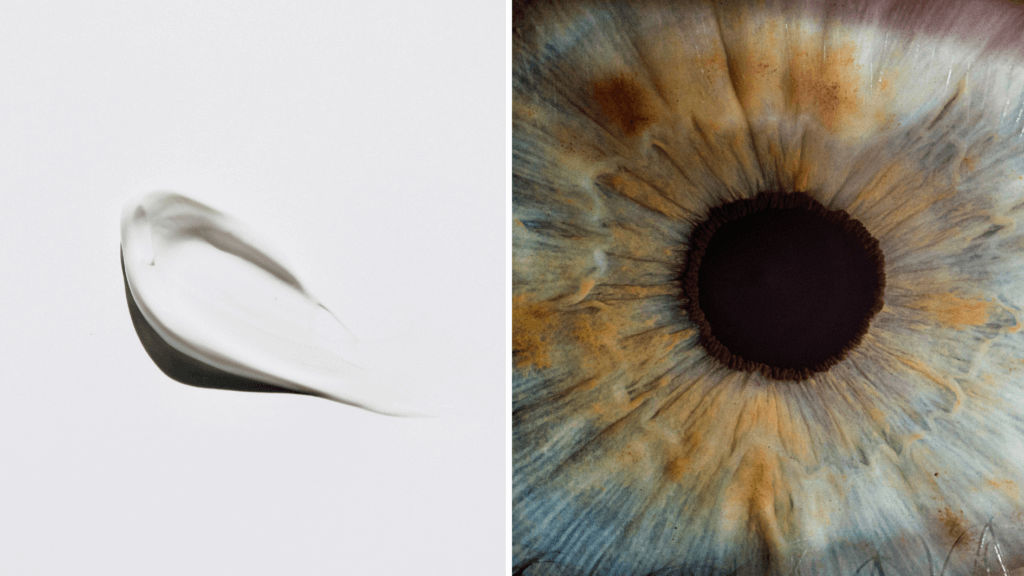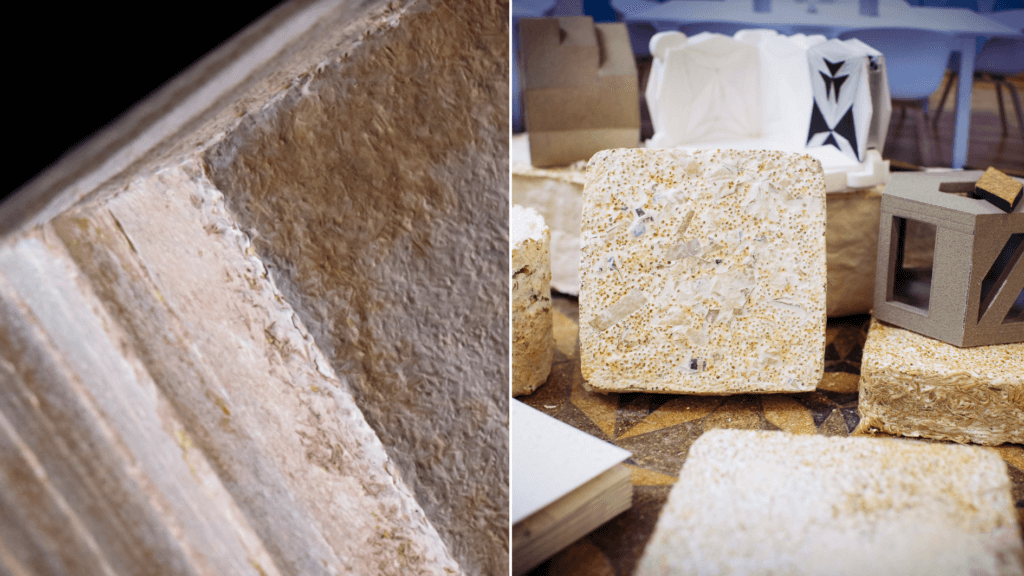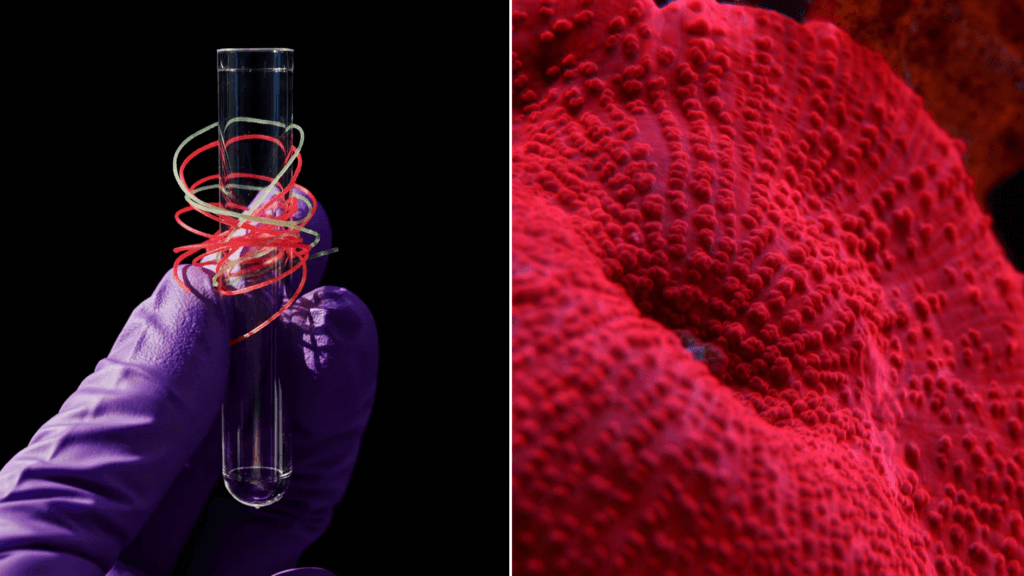
Portfolio
The Ray of Hope Accelerator, an initiative of the Biomimicry Institute, is proud to present the world’s most impactful nature-inspired startups tackling today’s most pressing environmental challenges.
Welcome to our portfolio: a vibrant community of visionary founders transforming nature’s insights into groundbreaking solutions for a regenerative, nature-positive future. Since 2020, the Ray of Hope Accelerator has supported 10 pioneering startups annually from across the globe, providing non-dilutive funding and tailored programming to turn bold ideas into reality. Together, our alumni have raised over $125 million in follow-up funding, scaling their innovations to address the urgent crises of climate change, biodiversity loss, and more. Each new cohort joins a trusted community where alumni share experiences, insights, and encouragement, fostering a network of collaboration and mutual growth.
Explore our portfolio to discover how these nature-inspired entrepreneurs are redefining the possibilities for a sustainable, regenerative world.
Filter
Filter
Selected Filters:
-
Creates clean catalysts for energy storage inspired by hemoglobin.
AZUL Energy Inc.
2024 Cohort / Miyagi, Japan
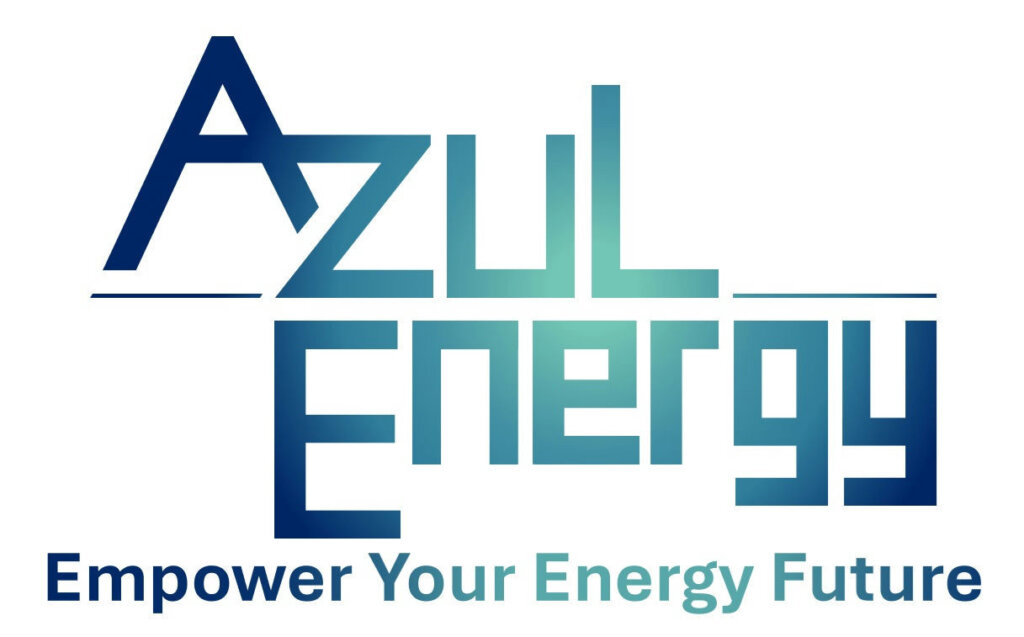
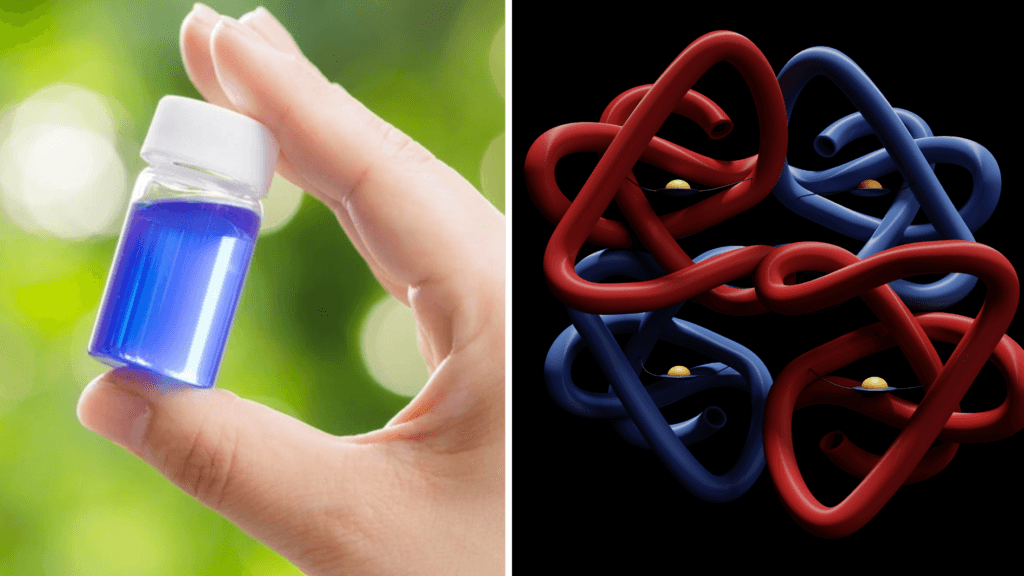

2024 Cohort / Miyagi, Japan
AZUL Energy Inc.
View AZUL Energy Inc. websiteThe energy transition to clean technologies is critical yet hampered by reliance on rare and environmentally taxing metals like platinum, whose mining emits 17 tons of CO2 per kilogram. AZUL Energy’s innovative solution addresses these challenges with a breakthrough catalyst inspired by hemoglobin’s molecular structure. By mimicking the natural energy storage mechanisms of the human body, AZUL Energy developed a clean alternative to Platinum Group Metal catalysts. Their catalyst enhances performance, longevity, and sustainability in applications such as fuel cells, water electrolyzers, and long-duration energy storage devices, all while significantly reducing CO2 emissions and geopolitical reliance on platinum supply chains.SDGs
13 - Climate Action 7 - Renewable Energy 9 - Innovation and Infrastructure
Verticals
Chemistry and Materials Climate Tech Renewable Energy
-
Develops scalable wildfire detection devices that naturally degrade after use. Inspired by heat-activated serotinous pine cones, its bio-based organic electronics provide early wildfire warnings without relying on toxic batteries or electronics. Spun out of Imperial College London and the Royal College of Art.
Pyri
2025 Cohort / London, United Kingdom
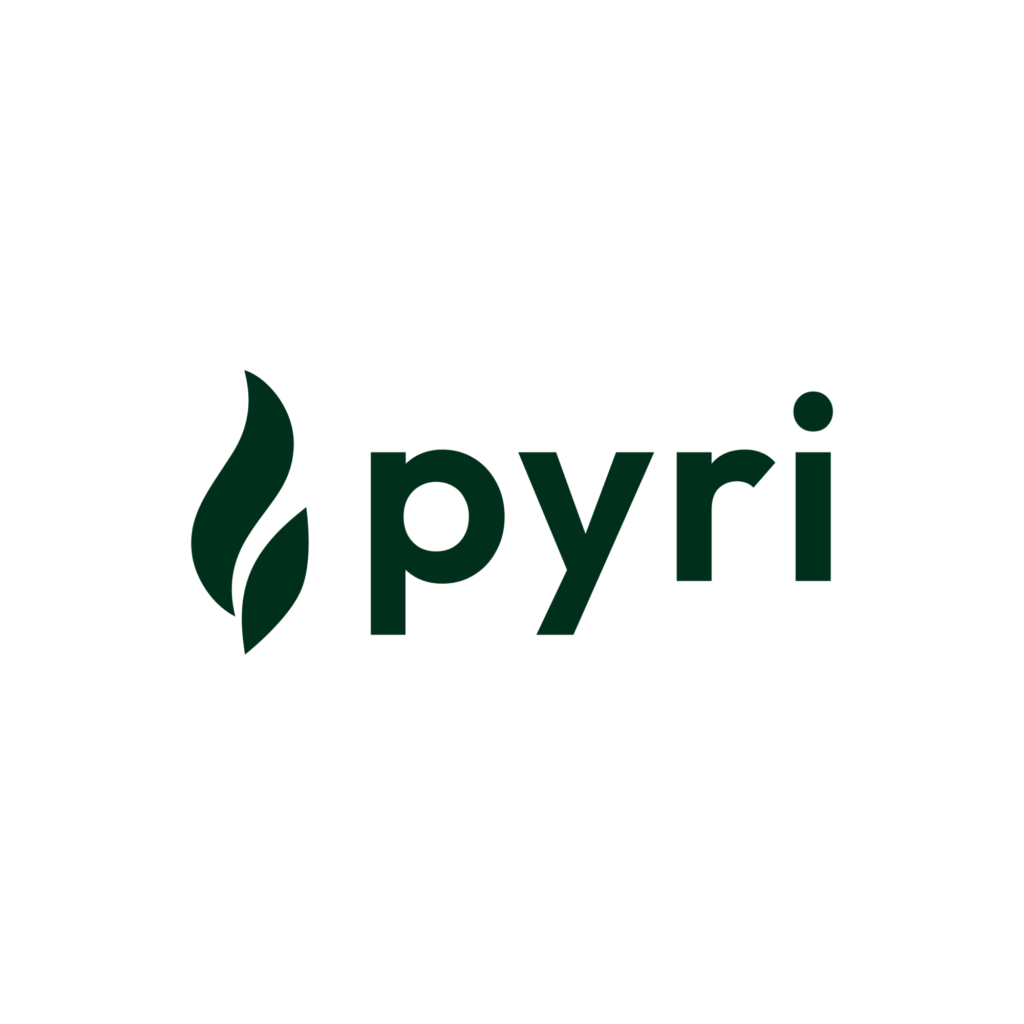
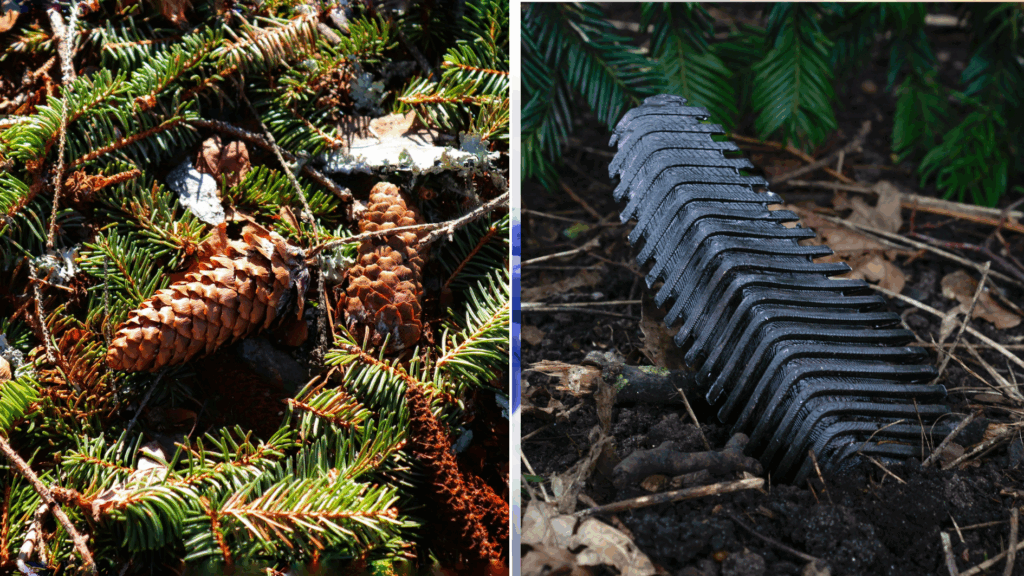

2025 Cohort / London, United Kingdom
Pyri
View Pyri websiteSDGs
13 - Climate Action 15 - Life on Land 9 - Innovation and Infrastructure
Verticals
Climate Tech Conservation and Remediation Food and Agriculture
-
Replicates early cell-like structures as an enabling technology to power efficient, low-carbon biomanufacturing. Spun-out of UCLA.
Praio
2025 Cohort / Emeryville, California

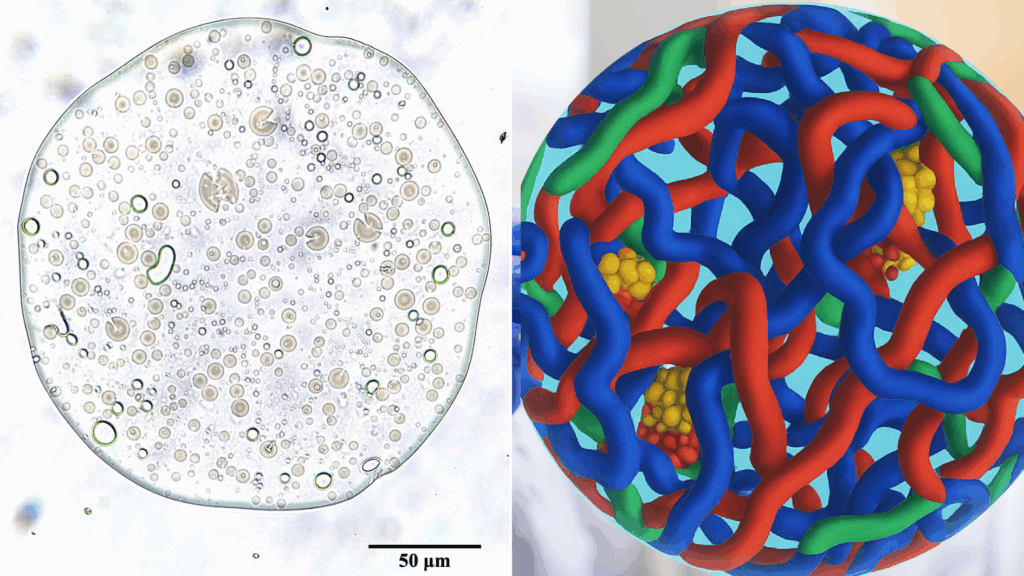

2025 Cohort / Emeryville, California
Praio
View Praio websiteSDGs
11 - Sustainable Cities and Communities 13 - Climate Action 9 - Innovation and Infrastructure
Verticals
Biotechnology Chemistry and Materials
-
Engineers biomimetic microplastic filters inspired by floating plant roots to efficiently capture and recover microplastics at scale. Spun out of Princeton University.
PolyGone Systems
2025 Cohort / Princeton, New Jersey

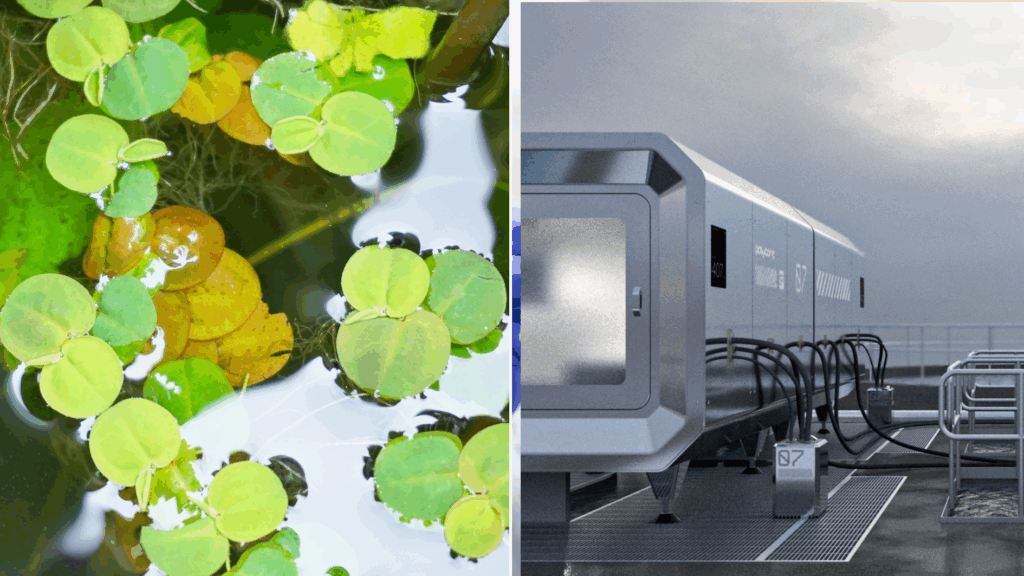

2025 Cohort / Princeton, New Jersey
PolyGone Systems
View PolyGone Systems websiteSDGs
14 - Life Below Water 6 - Clean Water and Sanitation 9 - Innovation and Infrastructure
Verticals
BlueTech Conservation and Remediation Water
-
Develops wind turbine blades inspired by the Triplaris americana seed to enable efficient renewable energy generation at low wind speeds and support distributed power access.
Parsons Kinetics
2025 Cohort / Bogotá, Colombia

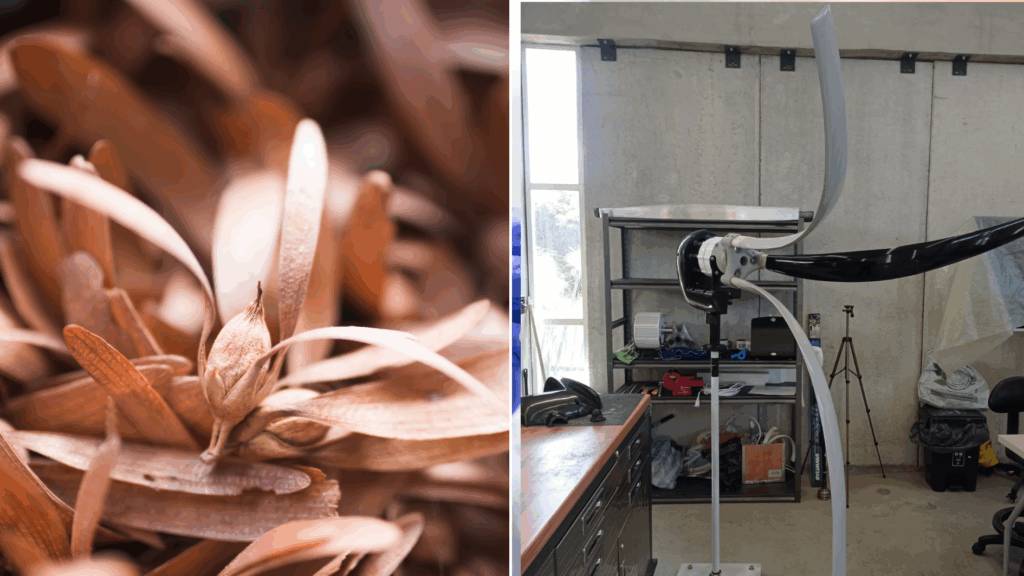

2025 Cohort / Bogotá, Colombia
Parsons Kinetics
View Parsons Kinetics websiteSDGs
13 - Climate Action 7 - Renewable Energy 9 - Innovation and Infrastructure
Verticals
Climate Tech Renewable Energy
-
Mimics the selective metal-binding biology of Amanita mushrooms to recover high-purity vanadium from industrial waste cleanly, efficiently, and at low temperatures, enabling affordable long-duration energy storage and resilient critical mineral supply chains. Advancing technology developed at the University of Massachusetts Lowell.
OptionV Energy
2025 Cohort / Boston, Massachusetts

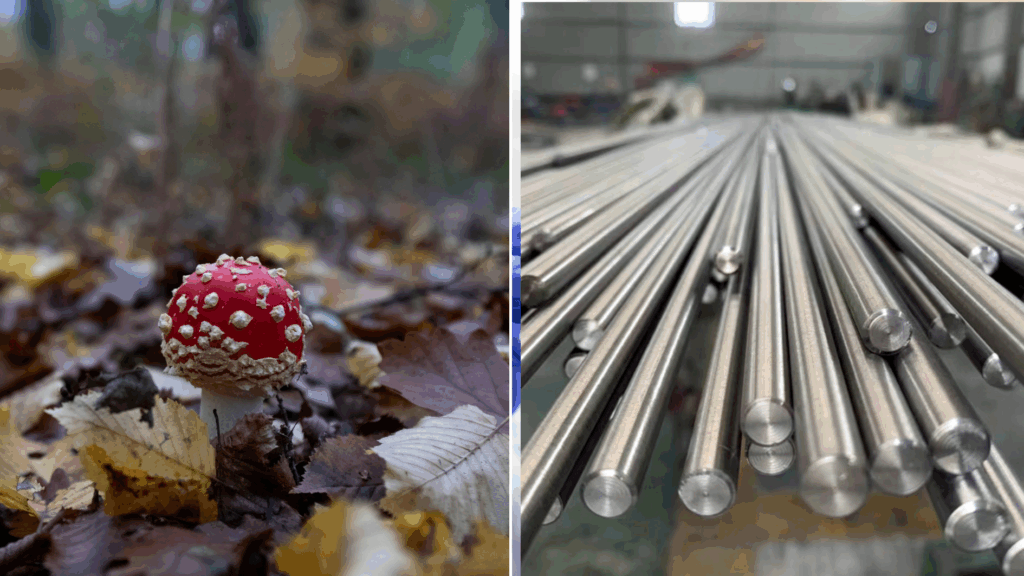

2025 Cohort / Boston, Massachusetts
OptionV Energy
View OptionV Energy websiteSDGs
11 - Sustainable Cities and Communities 7 - Renewable Energy 9 - Innovation and Infrastructure
Verticals
Chemistry and Materials Climate Tech Manufacturing and Advanced Robotics Renewable Energy
-
Grows premium preshaped wood, by leveraging how trees build wood on a cellular level, eliminating the need for logging and helping preserve the world’s biodiversity-rich forests.
New Dawn Bio
2025 Cohort / Wageningen, The Netherlands


2025 Cohort / Wageningen, The Netherlands
New Dawn Bio
View New Dawn Bio websiteSDGs
12 - Responsible Consumption 13 - Climate Action 15 - Life on Land
Verticals
Biotechnology Built Environment Food and Agriculture
-
Develops next-generation bio-based surgical adhesives inspired by the Dusky Arion slug’s mucus to rapidly seal bleeding tissue in surgical and trauma care. Spun out of the Wyss Institute at Harvard.
Limax Biosciences, Inc.
2025 Cohort / Boston, Massachusetts
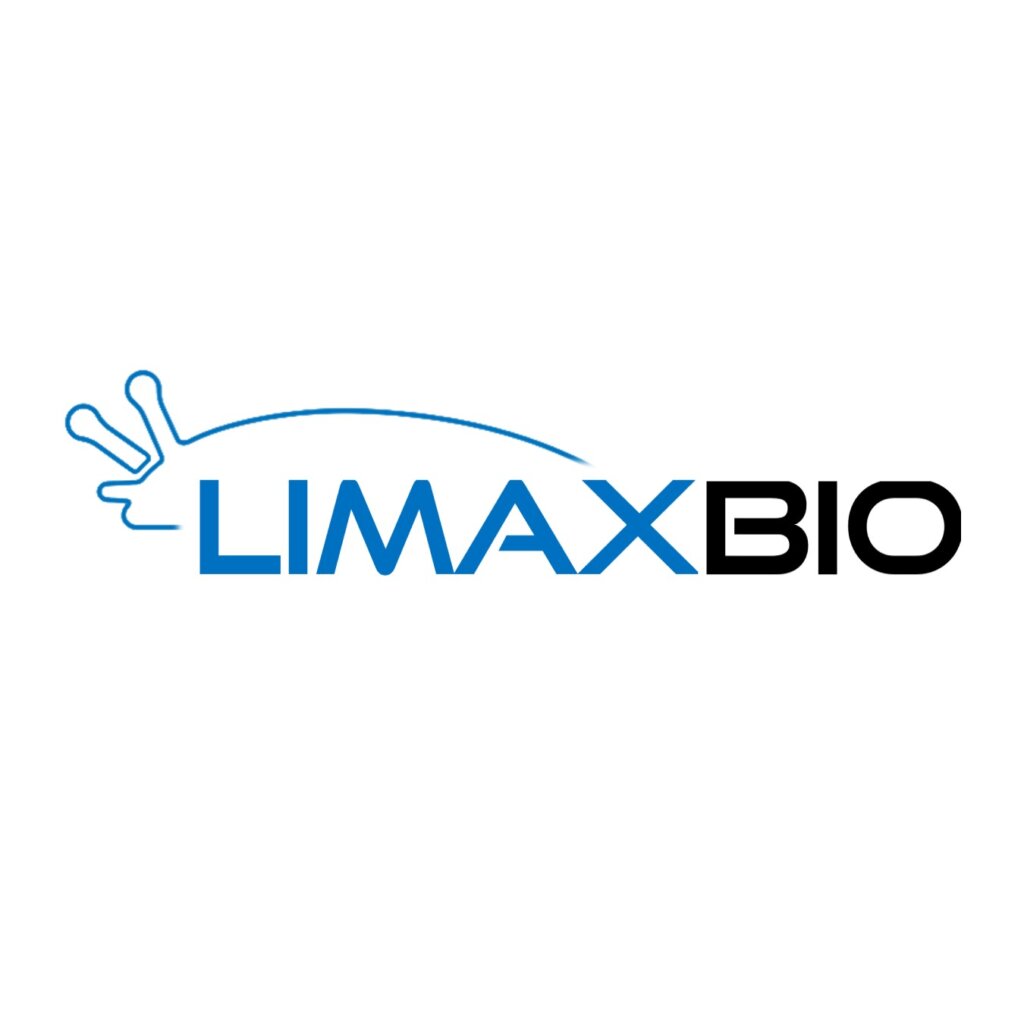
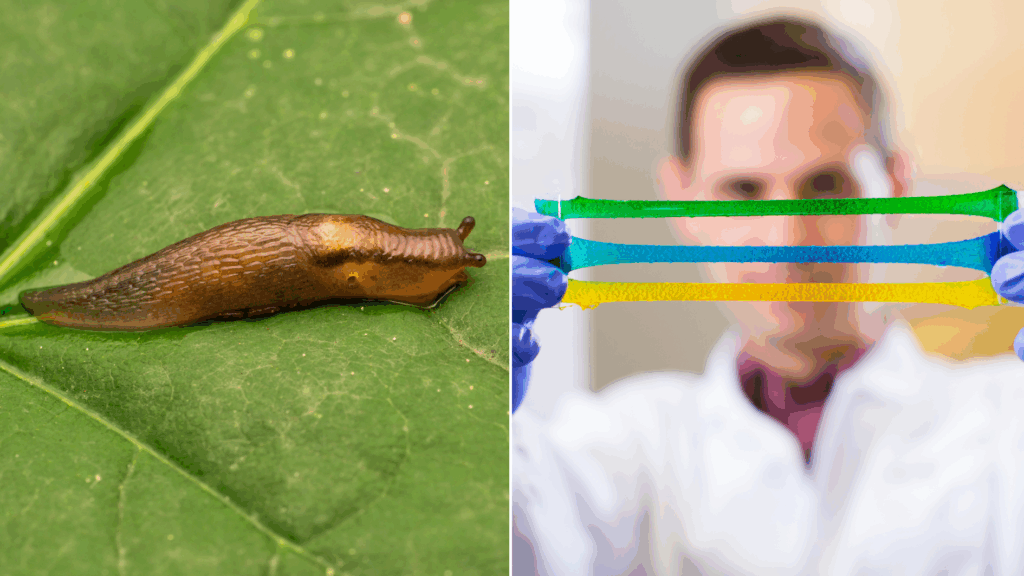

2025 Cohort / Boston, Massachusetts
Limax Biosciences, Inc.
View Limax Biosciences, Inc. websiteSDGs
11 - Sustainable Cities and Communities 3 - Good Health 9 - Innovation and Infrastructure
Verticals
Chemistry and Materials Life Sciences and Medtech
-
Develops a catheter for safe, effective blood-clot removal in narrow vessels, using a boa constrictor fang-inspired tip to reduce disability and procedural time. A Purdue University-licensed startup.
Emboa Medical, Inc.
2025 Cohort / West Lafayette, Indiana

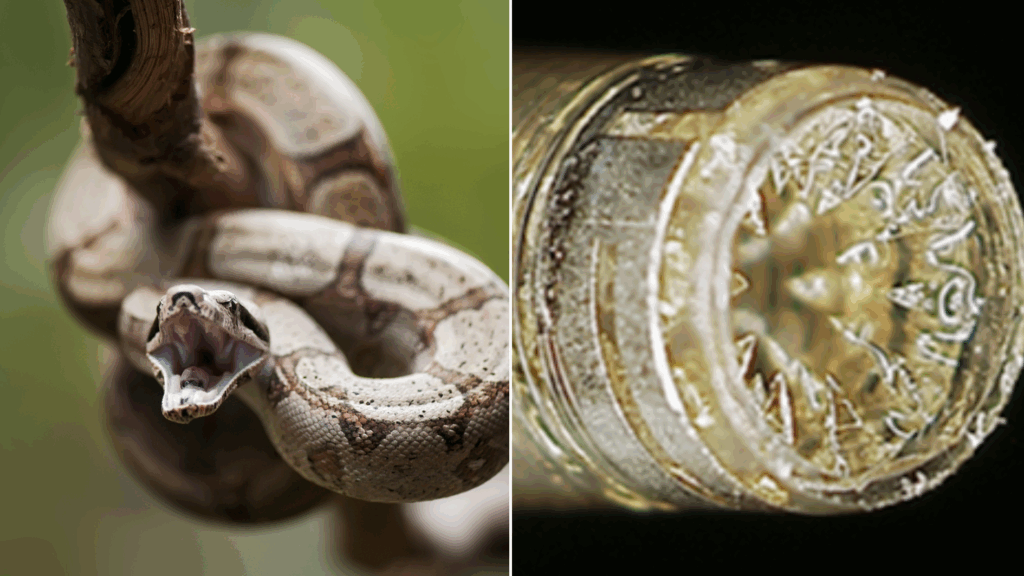

2025 Cohort / West Lafayette, Indiana
Emboa Medical, Inc.
View Emboa Medical, Inc. websiteSDGs
11 - Sustainable Cities and Communities 3 - Good Health 9 - Innovation and Infrastructure
Verticals
Life Sciences and Medtech
-
Pioneers 100% bio-based materials engineered from the molecular level up to mimic the structure and performance of leather. Enabling circularity and reducing carbon footprint, Ecotune’s innovative materials achieve both durability and biodegradability.
Ecotune
2025 Cohort / Irvine, California

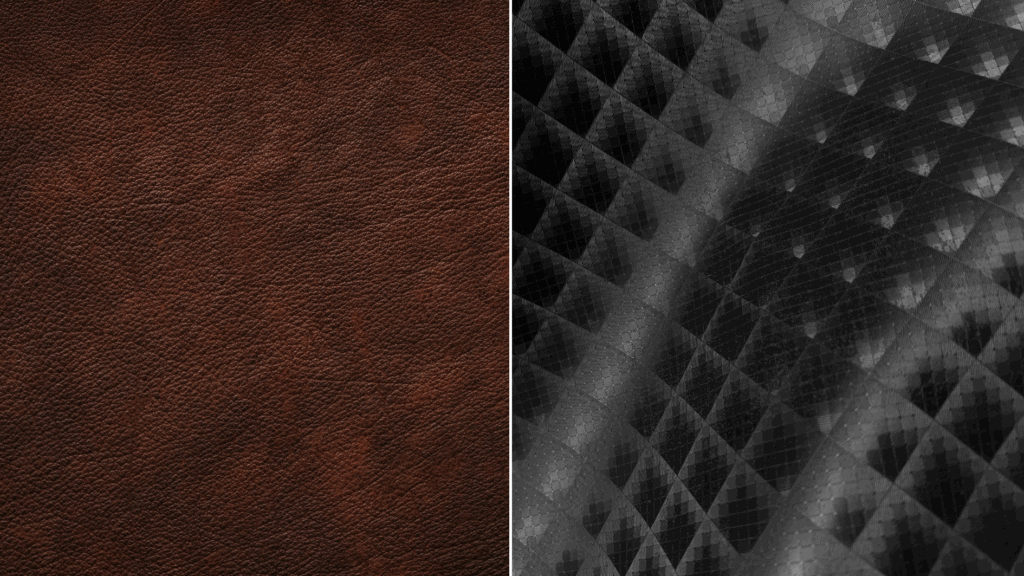

2025 Cohort / Irvine, California
Ecotune
View Ecotune websiteSDGs
12 - Responsible Consumption 15 - Life on Land 9 - Innovation and Infrastructure
Verticals
Chemistry and Materials Consumer Products / Cosmetics / Textiles
-
Reimagines coatings and adhesives that mimic the adhesion strategies of mussels, sticky bacteria, and geckos, using a proprietary plant-based green chemistry with no plastics or harmful solvents required.
Anew Material
2025 Cohort / New York, New York
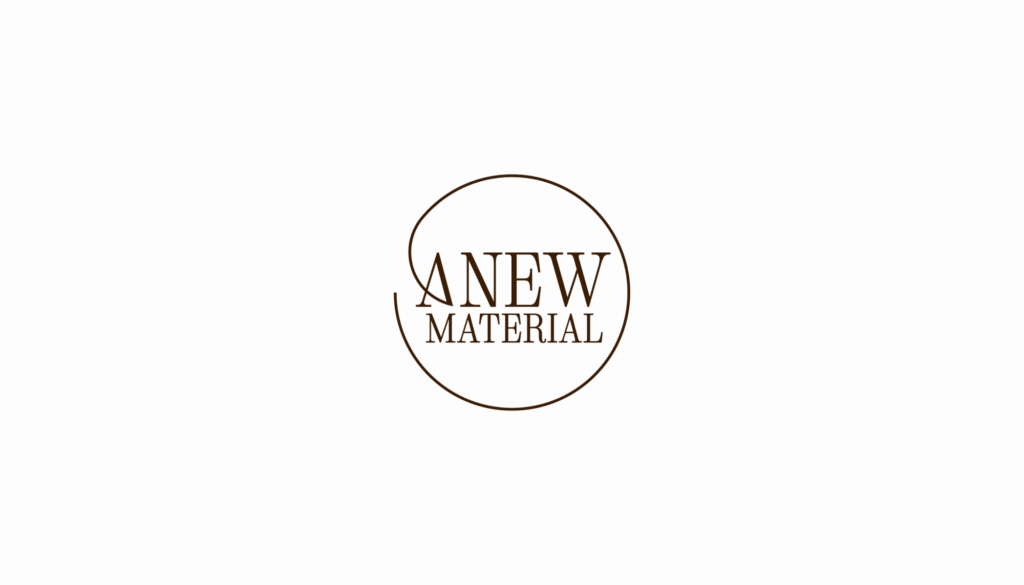
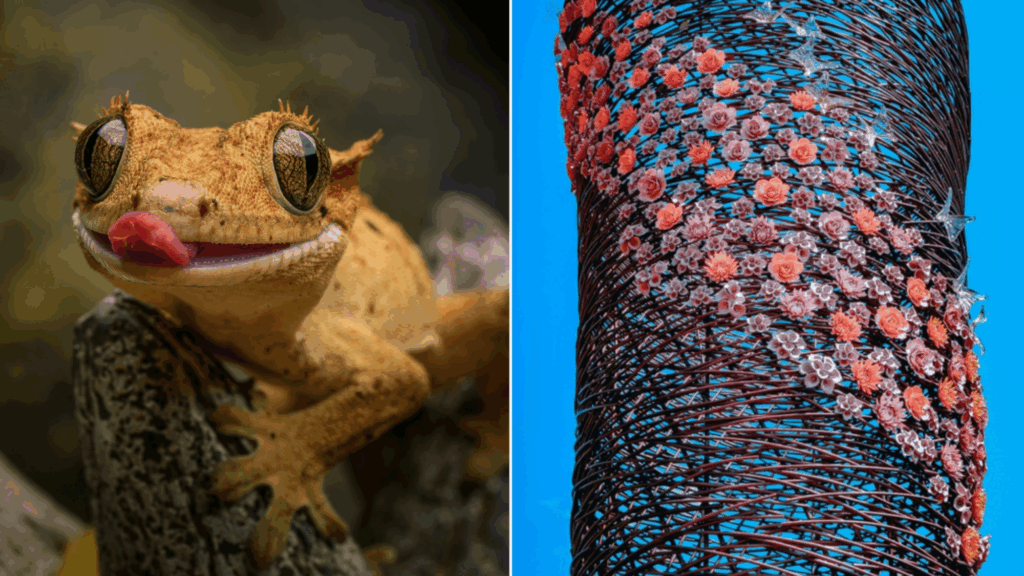

2025 Cohort / New York, New York
Anew Material
View Anew Material websiteSDGs
12 - Responsible Consumption 13 - Climate Action 3 - Good Health
Verticals
Chemistry and Materials Consumer Products / Cosmetics / Textiles
-
Develops next generation battery components inspired by cartilage nanostructure.
Valerion Energy
2024 Cohort / Ann Arbor, MI, USA

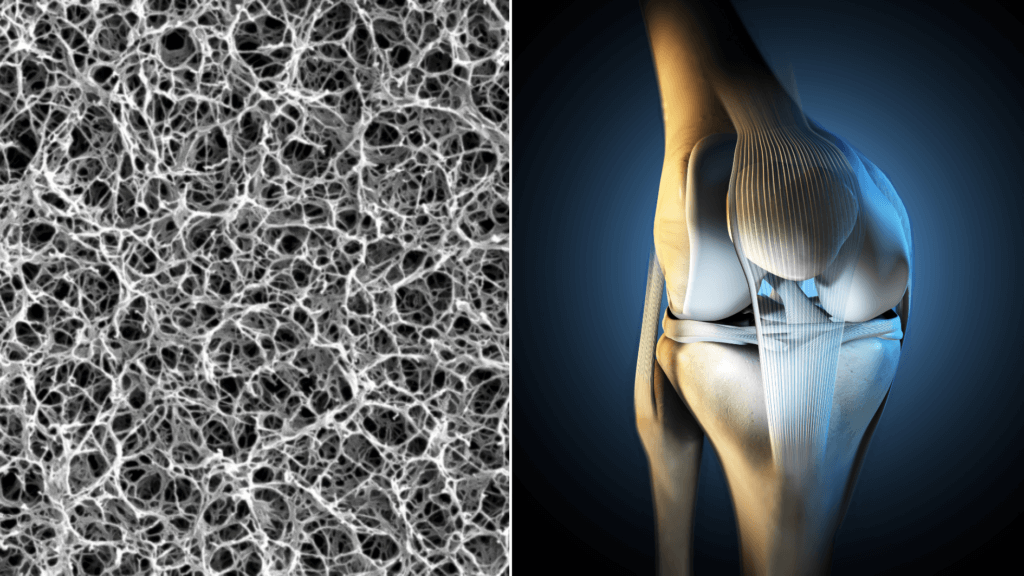

2024 Cohort / Ann Arbor, MI, USA
Valerion Energy
Valerion Energy Inc. developed a novel nanofiber membrane inspired by cartilage nanostructure for high-performance lithium-sulfur batteries. While lithium-sulfur batteries offer high energy density, their performance is hindered by ineffective, short-lived ion-selective membranes, and current options may pose fire risks. Valerion’s membrane mimics cartilage’s nanoscale structure, providing a strong, thin, and adaptable barrier between the anode and cathode. It features tunable porosity to enhance ion transport, offering safe, fast-charging, and cost-effective solutions for energy storage, including electric vehicles, while promoting equitable, affordable energy alternatives using recycled materials.View Valerion Energy websiteSDGs
11 - Sustainable Cities and Communities 13 - Climate Action 7 - Renewable Energy
Verticals
Chemistry and Materials Climate Tech Transportation and Mobility
-
Transforms seaweed waste into high performing and low impact chemistries, via a novel refinery process.
Soarce Inc.
2024 Cohort / Orlando, FL, USA

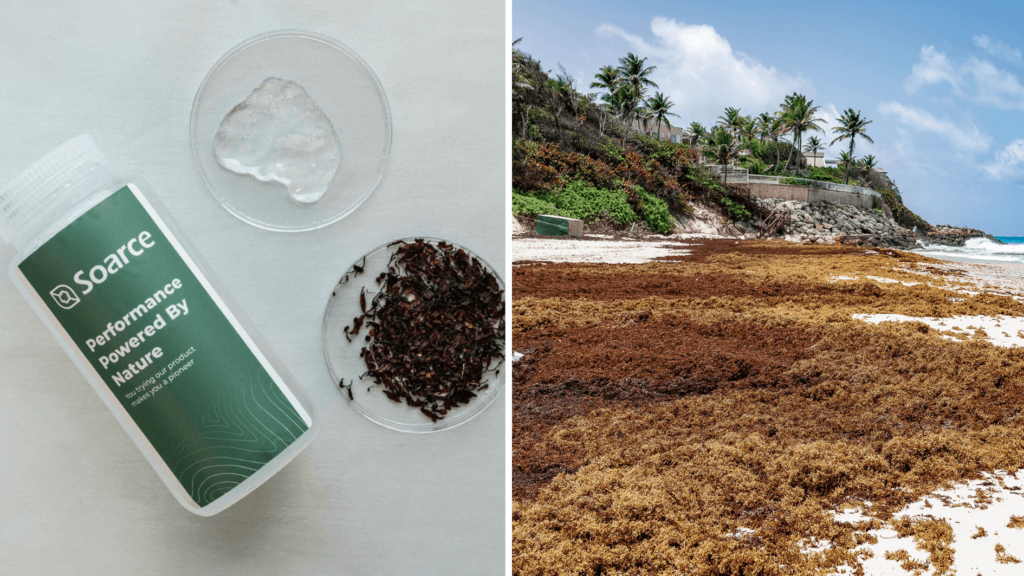

2024 Cohort / Orlando, FL, USA
Soarce Inc.
Soarce Inc. uses a novel refinery process to transform seaweed waste into high-performing, low-impact chemical treatments for fabrics, and beyond. Fashion brands seek sustainable, affordable alternatives to toxic, petroleum-based additives for yarns and textiles. Existing eco-friendly options, like plant-based dyes, lack durability, while conventional methods rely on harmful chemicals and excessive heat and water. Soarce’s products, SEABIND and SEARAMIC, are made from seaweed-derived cellulose and nanoceramics, and enhance dye absorption, material strength, UV protection, and fire resistance, offering non-toxic, efficient performance for various products.View Soarce Inc. websiteSDGs
11 - Sustainable Cities and Communities 12 - Responsible Consumption 14 - Life Below Water
Verticals
Chemistry and Materials Consumer Products / Cosmetics / Textiles Manufacturing and Advanced Robotics
-
Builds disruptive sensor platforms that emulates insects’ olfactory sense.
Scentian Bio Limited
2024 Cohort / Auckland, New Zealand
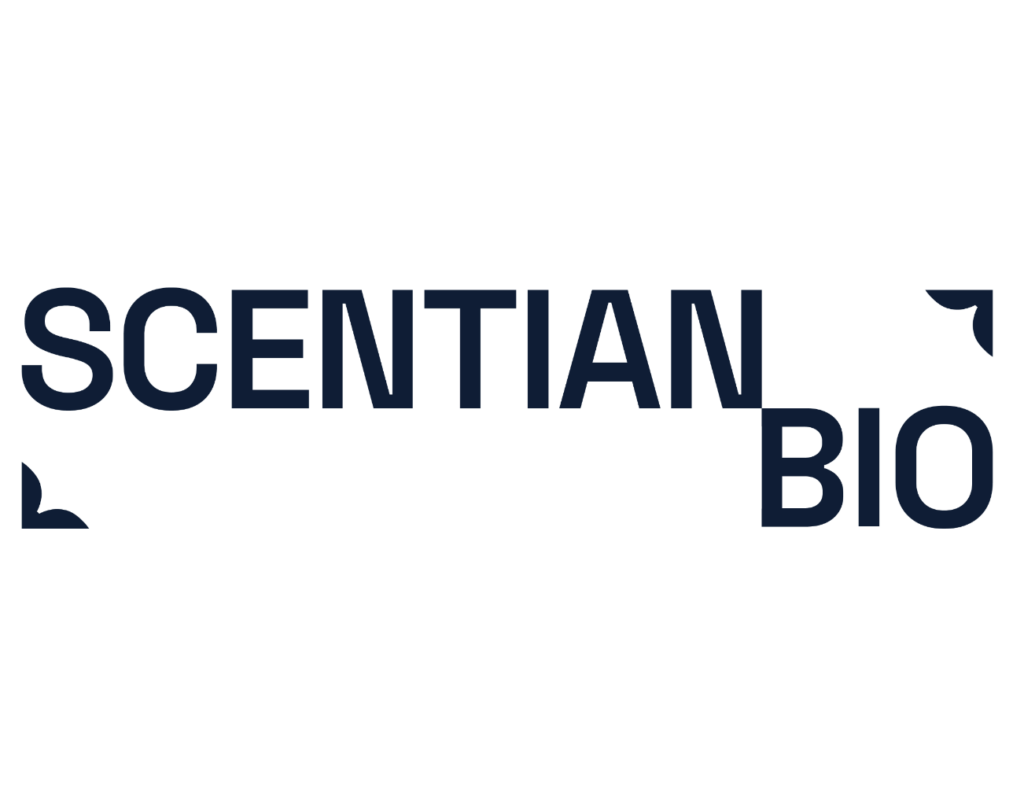
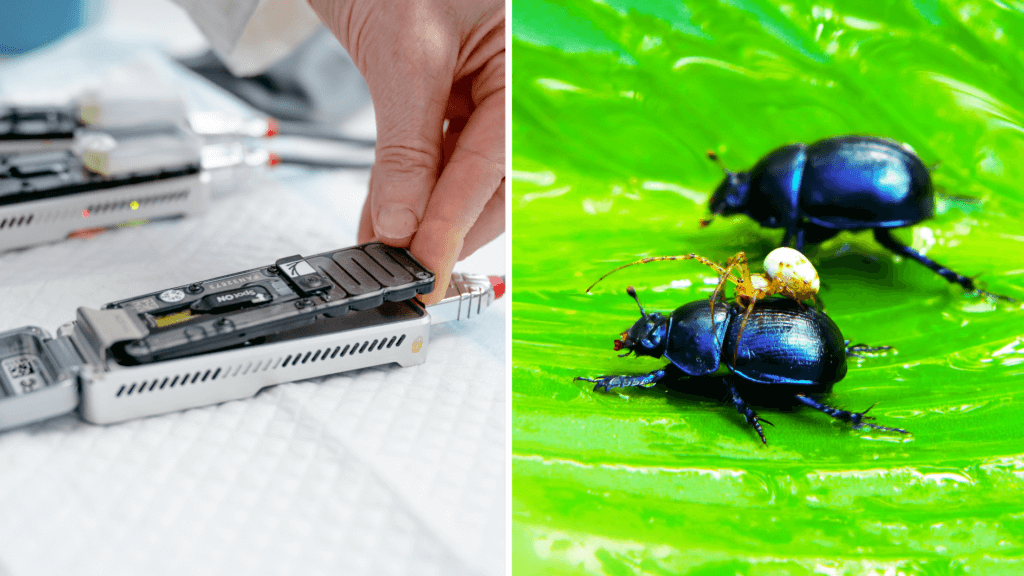

2024 Cohort / Auckland, New Zealand
Scentian Bio Limited
Scentian Bio’s biosensors combine insect olfactory receptors with AI to rapidly analyze and measure chemical compounds for food quality and health diagnostics. Existing technologies in food safety, sustainable agriculture, and healthcare are slow, costly, and struggle to detect low concentrations of compounds. Inspired by insects' highly sensitive receptors, their platform uses a handheld flow cell to deliver liquid samples to receptors, which send electrical signals processed by AI to provide real-time, precise chemical analysis. The team is optimizing receptor selection for tailored applications across industries.View Scentian Bio Limited websiteSDGs
11 - Sustainable Cities and Communities 12 - Responsible Consumption 2 - No Hunger
Verticals
Chemistry and Materials Food and Agriculture Life Sciences and Medtech
-
Creates wet binding bioadhesives inspired by barnacles and spider webs.
SanaHeal
2024 Cohort / Cambridge, MA, USA

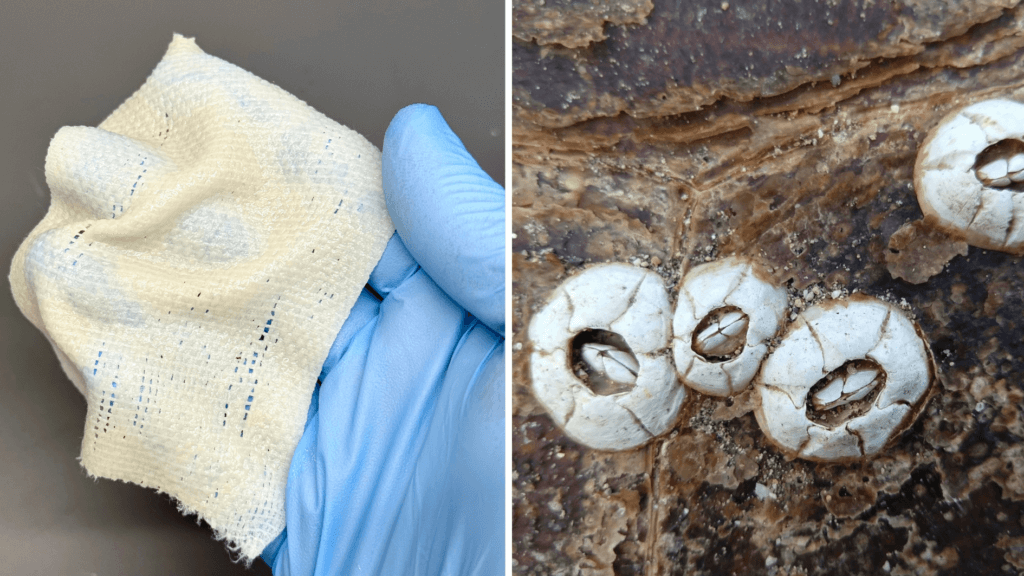

2024 Cohort / Cambridge, MA, USA
SanaHeal
SanaHeal’s novel hemostatic tissue sealants rapidly stop bleeding by mimicking the strong, water-resistant adhesion of barnacle and spider web glues. Excessive blood loss remains a critical challenge in injuries and surgeries, often causing higher mortality rates and increased treatment costs. Existing solutions struggle with reliably sealing wet tissue surfaces, especially in hemorrhaging patients. SanaHeal’s bioengineered paste, made from polymers and silica nanoparticles, forms a tight, contamination-resistant seal within 15 seconds when applied to wounds with light compression. Available in patches and spray powders, their products require no special preparation and work independently of blood clotting ability or moisture levels.View SanaHeal websiteSDGs
10 - Reduced Inequalities 11 - Sustainable Cities and Communities 3 - Good Health
Verticals
Chemistry and Materials Conservation and Remediation Life Sciences and Medtech
-
Grows unique bio-cement from a biomineralizing plant enzyme.
ReefCycle LLC
2024 Cohort / Raleigh, NC, USA
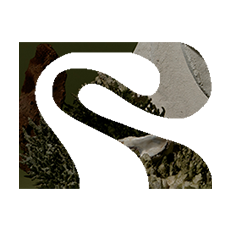
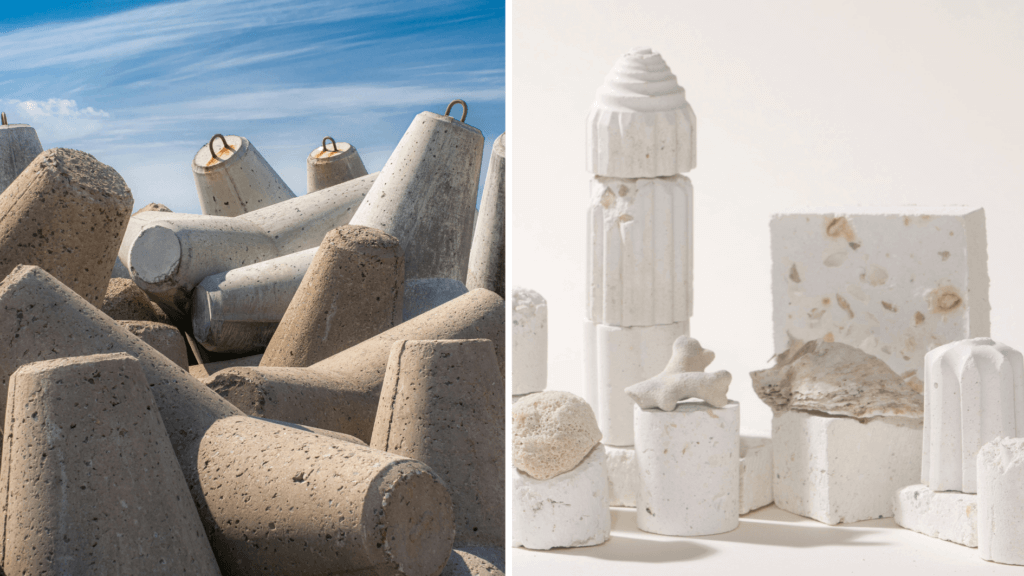

2024 Cohort / Raleigh, NC, USA
ReefCycle LLC
Cement production drives 8% of global CO2 emissions, but it remains essential for building climate-resilient coastlines amid rising sea levels and storm surges. ReefCycle offers a carbon-neutral, marine-safe alternative inspired by shell formation via biomineralization. Their process uses enzymes extracted from nitrogen-fixing plants to catalyze the creation of calcium carbonate cement, chemically identical to oyster shells. This bio-cement is ideal for reef restoration and sustainable coastal infrastructure, providing a durable, eco-friendly solution to protect vulnerable communities and ecosystems.View ReefCycle LLC websiteSDGs
11 - Sustainable Cities and Communities 14 - Life Below Water 9 - Innovation and Infrastructure
Verticals
BlueTech Chemistry and Materials Conservation and Remediation
-
Develops novel hydrogels that mimic natural mucus, with functions like lubrication, adhesion and protection.
Gel Matter Co.
2024 Cohort / New York, NY, USA

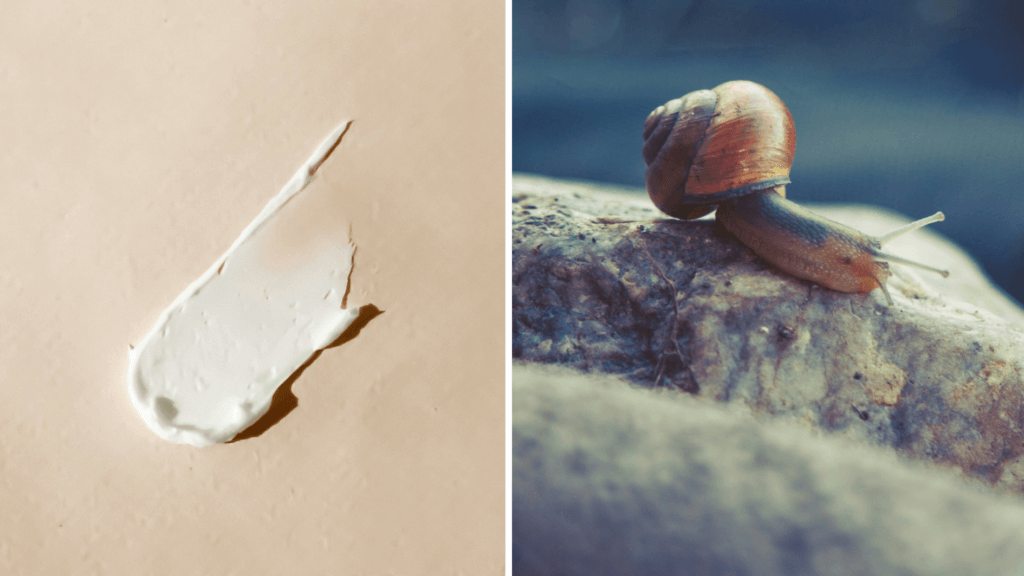

2024 Cohort / New York, NY, USA
Gel Matter Co.
Harvesting mucus from animals for applications in cosmetics, medicine, and biolubricants raises significant ethical, environmental, and sustainability concerns. Gel Matter addresses these issues with a lab-made, synthetic alternative that mimics the functional properties of natural mucus while being vegan, parasite-free, shelf-stable, and more cost-effective. Using advanced polymer science, their scalable process allows precise customization of mucus properties - such as slipperiness, adhesiveness, or protective capabilities - to suit various industries. Gel Matter’s innovative approach eliminates the need for animal farming and harvesting, offering a sustainable, versatile solution that integrates seamlessly into existing manufacturing processes.SDGs
11 - Sustainable Cities and Communities 12 - Responsible Consumption 3 - Good Health
Verticals
Chemistry and Materials Consumer Products / Cosmetics / Textiles Life Sciences and Medtech
-
Turns cellulosic textile waste into high-quality fibers, featuring a molecular structure similar to cotton.
Fiberly
2024 Cohort / Toulouse, France - Buenos Aires, Argentina
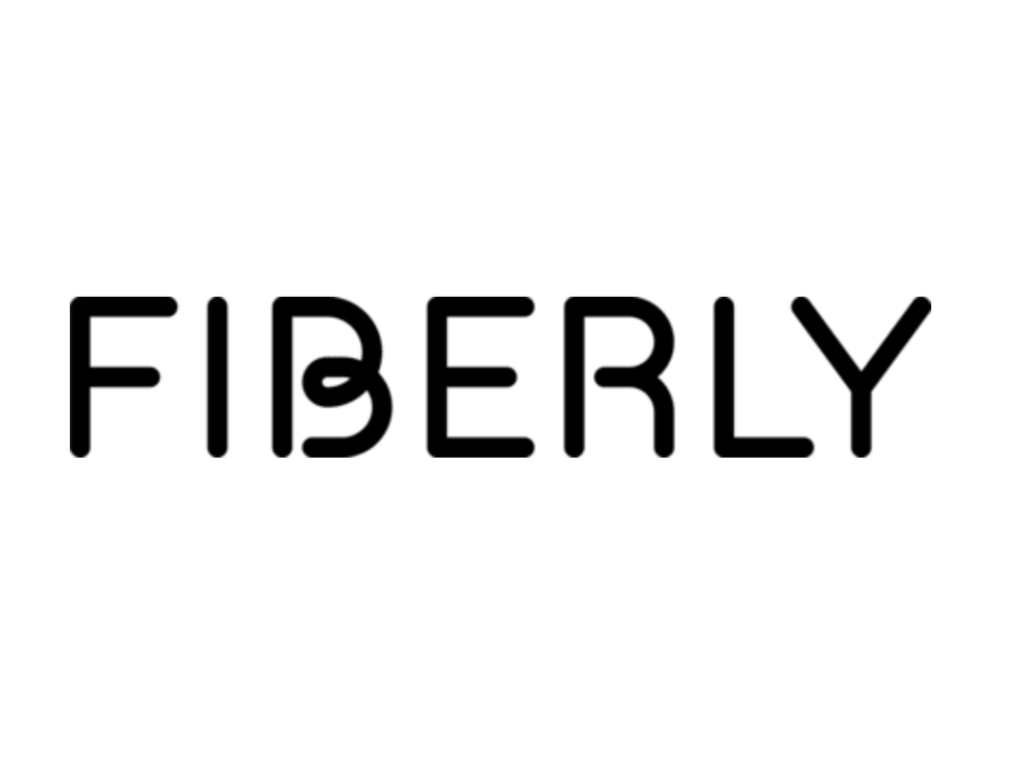
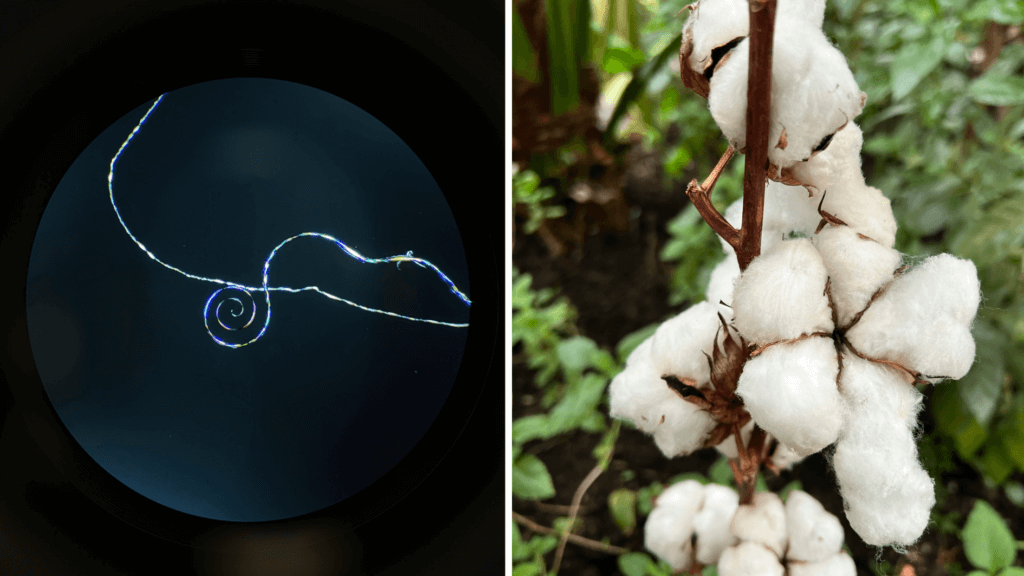

2024 Cohort / Toulouse, France - Buenos Aires, Argentina
Fiberly
Cotton, a staple of the $2.5 trillion fashion industry, comes with heavy environmental and ethical costs, but FIBERLY offers a sustainable alternative by transforming discarded textiles into high-quality fibers. By replicating the molecular structure and properties of premium cotton, including softness, breathability, and absorbency, FIBERLY’s innovative process re-engineers textile waste into performance-enhanced fibers. Using advanced spinneret designs and electric fields to align cellulose molecules, their closed-loop system minimizes environmental impact by recovering and reusing solvents and water. With scalable technology and customizable production, FIBERLY delivers a sustainable, high-performance solution to reduce reliance on traditional cotton farming.View Fiberly websiteSDGs
11 - Sustainable Cities and Communities 12 - Responsible Consumption
Verticals
Chemistry and Materials Consumer Products / Cosmetics / Textiles Manufacturing and Advanced Robotics
-
Imparts a superhydrophobic lotus effect on cellulosic products like paper, via green chemistry.
CelluloTech Inc.
2024 Cohort / Vancouver, Canada


2024 Cohort / Vancouver, Canada
CelluloTech Inc.
Protecting cellulose-based products like paper and cardboard from water, grease, and wear traditionally requires harmful coatings like plastics, petroleum waxes, and PFAS, but Cellulotech offers a revolutionary green alternative. Inspired by the lotus leaf’s superhydrophobic properties, their innovative process uses bio-based reagents to transform cellulose materials into high-performing, water- and grease-repellent products without compromising recyclability or adding toxic layers. This breakthrough not only preserves the natural feel and sustainability of cellulose but also adds value across industries such as packaging, construction, and healthcare, all while reducing waste and manufacturing emissions.View CelluloTech Inc. websiteSDGs
11 - Sustainable Cities and Communities 12 - Responsible Consumption 9 - Innovation and Infrastructure
Verticals
Chemistry and Materials Consumer Products / Cosmetics / Textiles
-
Creates next-gen colors and effects with vibrant, metal-like pigments, all from plant-based cellulose.
Sparxell
2023 Cohort / Cambridge, UK
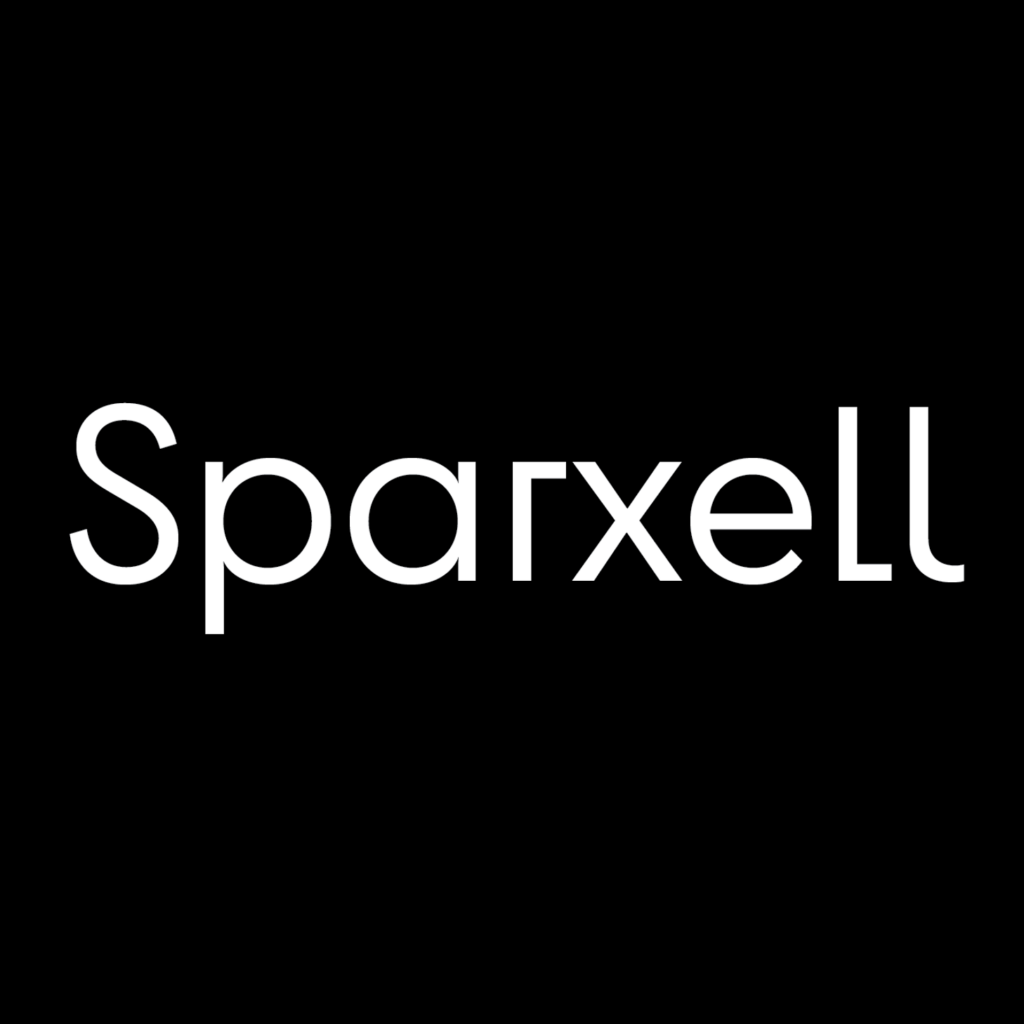
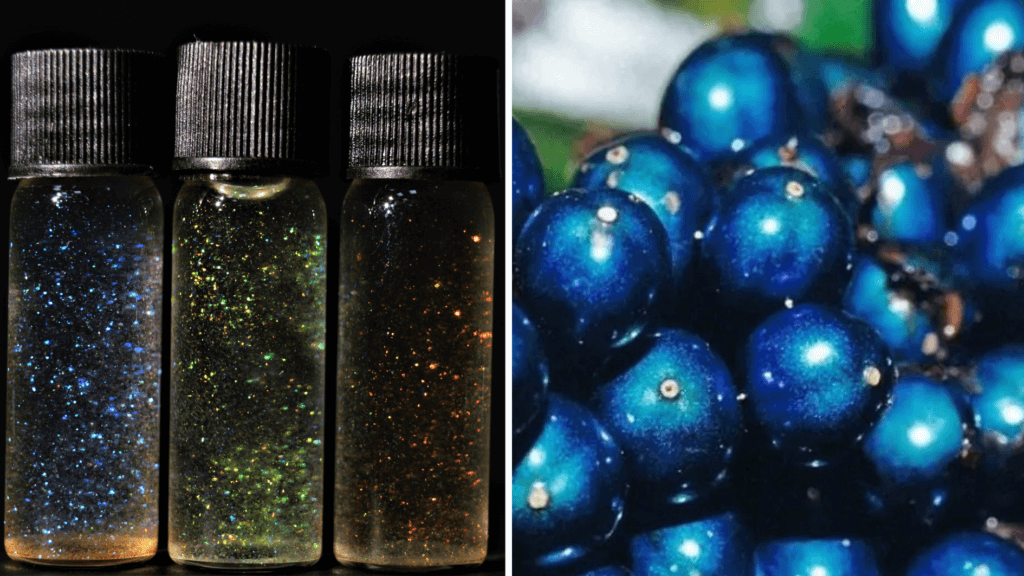

2023 Cohort / Cambridge, UK
Sparxell
Sparxell creates the next generation of colors and effects with vibrant, metal-like pigments, all from plant-based cellulose. Sustainable vibrant colorants represent a $65 B market for products as diverse as cosmetics, paints, fabrics, automobile coatings, and packaging. Traditional materials used are non-renewable, non-biodegradable and unsustainably sourced mineral pigments. Sparxell has developed the first fully biodegradable, non-toxic, microplastic-free, environmentally sustainable pigments, glitters, sequins and films using cellulose nanocrystals (CNCs) assembled into cholesteric (helix-like) structures to produce intense reflectance spectra. The Sparxell-owned patented manufacturing technique takes CNCs and transforms them into uniformly reflective highly dispersible particles with state-of-the-art performance.View Sparxell websiteSDGs
12 - Responsible Consumption 13 - Climate Action 9 - Innovation and Infrastructure
Verticals
Chemistry and Materials Consumer Products / Cosmetics / Textiles
Read more about Sparxell on AskNature -
Developed an agtech solution that prevents pests from laying eggs on crops.
Noovi
2023 Cohort / Bratislava, Slovakia


2023 Cohort / Bratislava, Slovakia
Noovi
Each year, global agriculture loses 20-40% of crop yields to pests and diseases, with losses set to double without effective protection. Noovi (formerly Vitiport) has created "Pheromark," a non-toxic, zero-residue spray that prevents pests from laying eggs on crops like apples, grapes, pears, and nuts. This solution introduces a new market category and includes personalized guidance for application. Noovi’s innovation offers a sustainable alternative to pesticides, reducing hazards for farmers and ensuring safer food and competitive agricultural production.View Noovi websiteSDGs
13 - Climate Action 15 - Life on Land 2 - No Hunger
Verticals
Food and Agriculture
-

2023 Cohort / Vancouver, BC, Canada
Lux Bio
Lux Bio (formerly Nyoka Design Corp) has developed a sustainable alternative to petrochemical-based chemiluminescence. Inspired by bioluminescence in nature, their core technology produces stable, safe light for over 48 hours, replacing single-use plastics and carcinogenic waste. Their first product, Bioluminescent Powder, is a non-toxic, biodegradable formula that activates with water to produce light. This innovation has the potential to replace chemiluminescence and LED applications, with products like BioLure and Bio-SDM poised to revolutionize industries such as commercial fishing, navy, and marine search and rescue.View Lux Bio websiteSDGs
12 - Responsible Consumption 14 - Life Below Water 9 - Innovation and Infrastructure
Verticals
Biotechnology Chemistry and Materials
-
Disrupts approaches to farming with a microbe-delivery platform.
Ivu Biologics
2023 Cohort / Cambridge, MA, US

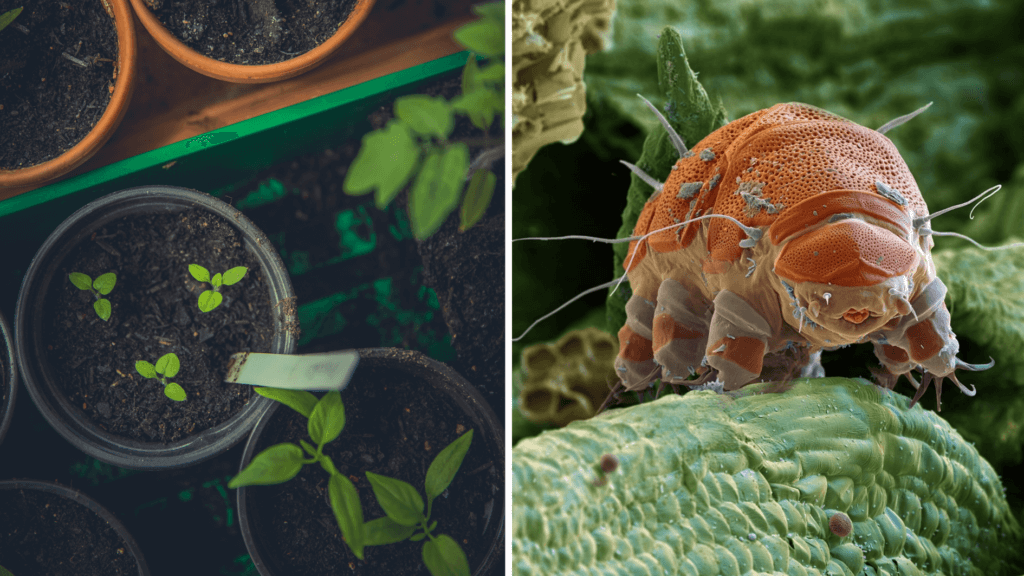

2023 Cohort / Cambridge, MA, US
Ivu Biologics
Ivu Biologics engineers seeds’ microenvironment to deliver plant microbes and nutrients for stress alleviation, seed enhancement and to reduce farmer reliance on fertilizers and pesticides. Inspired by the tardigrades ability to endure extreme dehydration, they developed a seed coating to extend the life of microbes that are beneficial for plants and soil. Their biopolymer-based delivery system consisting of a structural protein and polysaccharide encapsulates, stores, and precisely delivers biofertilizers to the soil. This technology benefits precision agriculture by increasing yield, minimizing the use of inputs such as pesticides, synthetic fertilizers, and water, and mitigating the negative effects of climate change.View Ivu Biologics websiteSDGs
13 - Climate Action 15 - Life on Land 2 - No Hunger
Verticals
Biotechnology Food and Agriculture
Read more about Ivu Biologics on AskNature -
Grows resilient coral in months and years instead of decades and centuries.
Coral Vita
2023 Cohort / Freeport, Bahamas
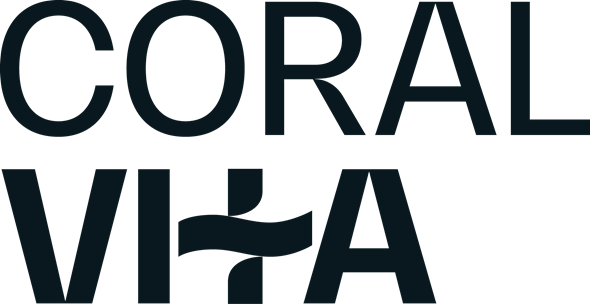
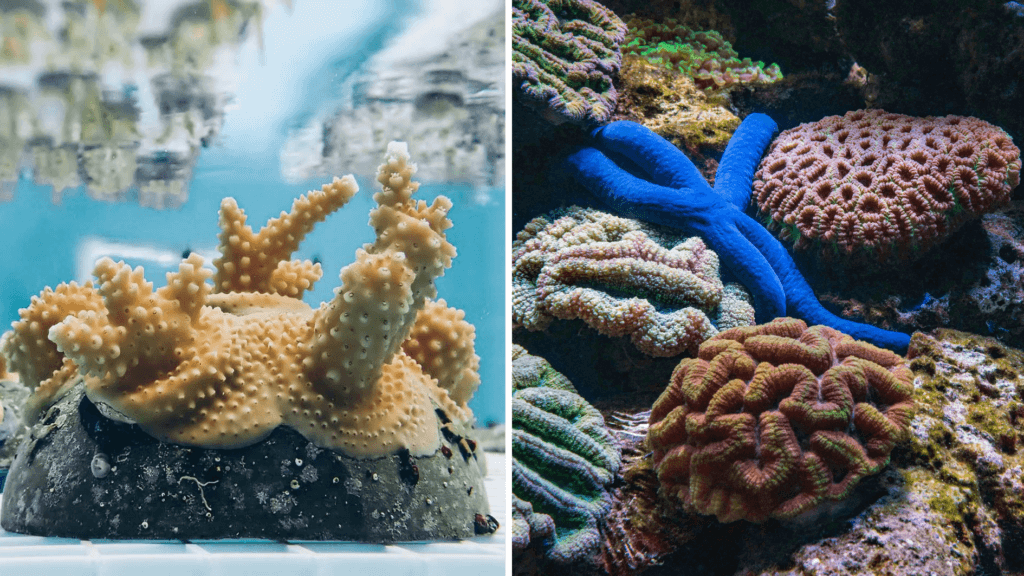

2023 Cohort / Freeport, Bahamas
Coral Vita
Coral Vita grows climate change resilient coral up to 50x faster via a process known as micro-fragmentation, while deploying a commercial model to restore dying reefs at scale. This is accomplished via their unique high-tech land-based farms that integrate breakthrough methods to accelerate coral growth, unlocking important species diversity, while enhancing their resilience to climate change. Coral Vita is deploying a for-profit business model that can sustain large-scale reef restoration. The team has also developed a machine learning based program called BrainCoral that will transform how practitioners can manage farming operations and data flow.View Coral Vita websiteSDGs
13 - Climate Action 14 - Life Below Water 17 - Partnerships for the Goals
Verticals
BlueTech Climate Tech Conservation and Remediation
Read more about Coral Vita on AskNature -

2023 Cohort / Renens, Switzerland
CompPair Technologies
CompPair Technologies offers a composite material enabling ultra-fast repair. Composites are lightweight and strong materials, used in sports equipment, wind energy structures, transportation and aerospace components. However, composite materials are sensitive to damage events leading to micro-cracking or delamination. CompPair tackles these issues by building healable and sustainable composite materials to extend the lifetime of products while reducing waste. HealTech™, CompPair’s cutting-edge technology is a new material allowing the production of composite parts with intrinsic healing functionalities. HealTech™ improves operational efficiency, reduces maintenance costs and extends the lifetime of products to prevent waste, preserve resources and keep the economic value of raw materials in the loop for longer.View CompPair Technologies websiteSDGs
12 - Responsible Consumption 13 - Climate Action 9 - Innovation and Infrastructure
Verticals
Chemistry and Materials Consumer Products / Cosmetics / Textiles
Read more about CompPair Technologies on AskNature -
Biotech company focused on the development of nanocellulose polymers.
Cellugy
2023 Cohort / Søborg, Denmark

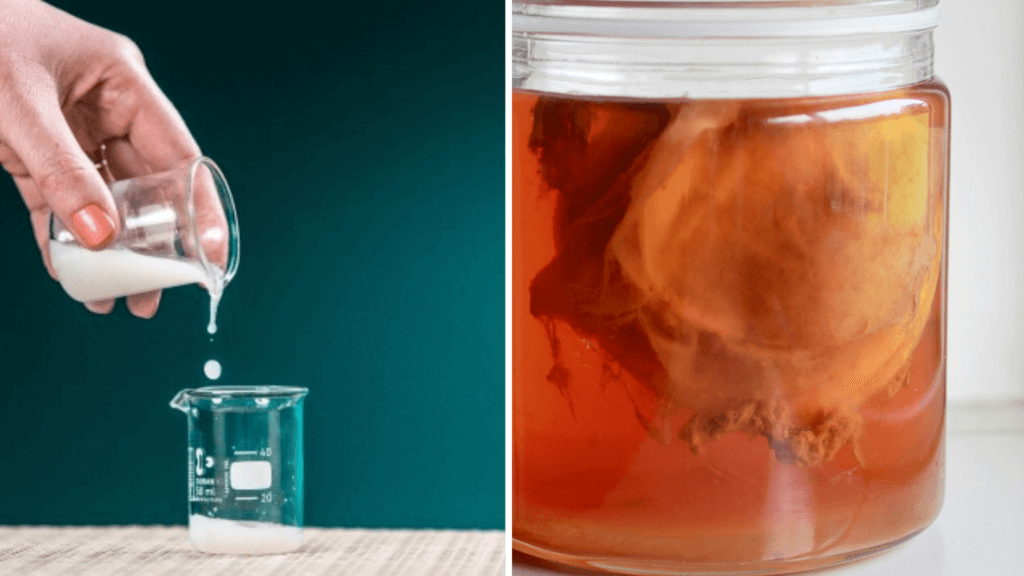

2023 Cohort / Søborg, Denmark
Cellugy
Cellugy develops sustainable, high-performance ingredients for consumer goods using renewable resources. Their fermentation platform transforms sugars from various feedstocks with a portfolio of over 20 bacteria species to produce cellulose with improved quality, competitive economics, and a lower environmental footprint. The company is reinventing personal care and textiles with biobased, biodegradable ingredients, such as EcoFLEXY—a vegan, non-GMO, cruelty-free rheology modifier for personal care that replaces carbomers and reduces microplastic pollution.View Cellugy websiteSDGs
12 - Responsible Consumption 14 - Life Below Water 9 - Innovation and Infrastructure
Verticals
Biotechnology Consumer Products / Cosmetics / Textiles
Read more about Cellugy on AskNature -
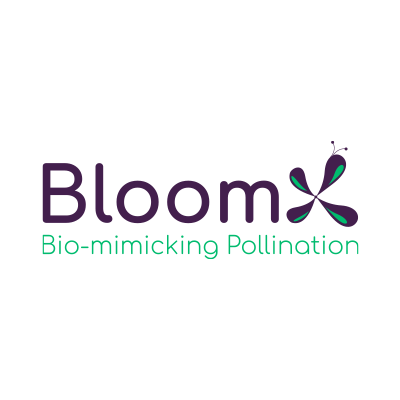
2023 Cohort / Rishpon, Israel
BloomX
Agricultural lands have expanded by 600%, while the number of honey bee hives have grown by only 80%, jeopardizing the pollination capacity of crops. BloomX’s solution is a pollination-as-a-service empowering growers to sustainably drive-up crop yields and improve fruit quality all while lowering the environmental footprint of crop production. This is accomplished via their unique pollination technology that couples predictive algorithms utilizing agronomical knowhow and natural pollinators science with advanced, crop-specific (blueberries, avocados, etc.) robotic devices, replicating strategies pollinators use in nature.View BloomX websiteSDGs
12 - Responsible Consumption 13 - Climate Action 2 - No Hunger
Verticals
Food and Agriculture
Read more about BloomX on AskNature -
Commercializes environmentally friendly chemical cleaning products.
Sudoc
2022 Cohort / Cambridge, MA, USA
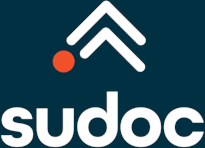
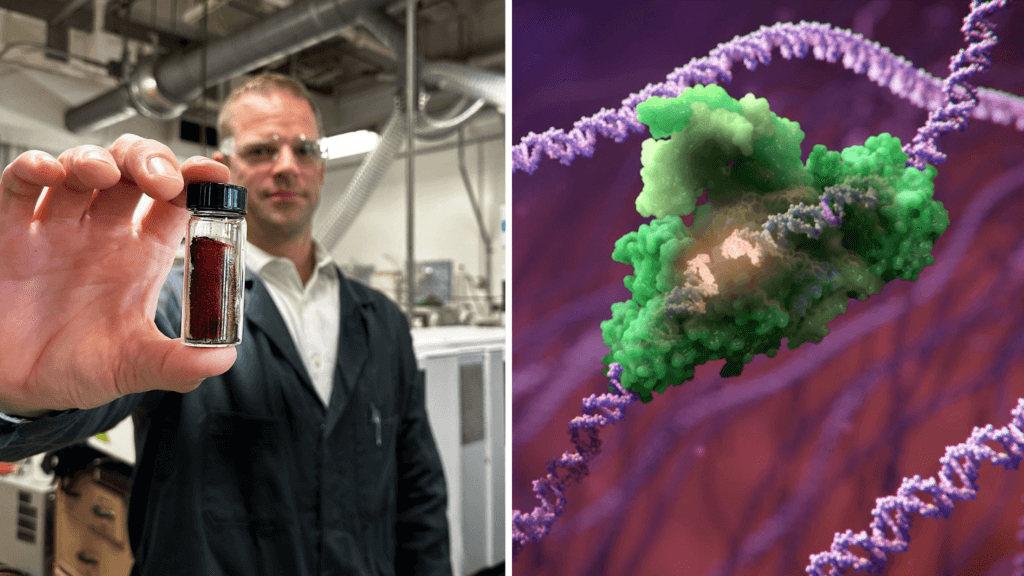

2022 Cohort / Cambridge, MA, USA
Sudoc
Sudoc creates chemical cleaning products that emulate how enzymes work in the human liver to efficiently oxidize harmful and toxic micropollutants. By closely mimicking the mechanism of these peroxidase liver enzymes, Sudoc’s innovative chemistry platform can reduce, replace, and eliminate toxic chemicals in a wide range of applications. The company’s first product outperforms traditional mold stain removal products with 1/30th the chemical content, and they are developing a range of other household and commercial cleaning products, as well as solutions for the treatment of waste water and waste pharmaceuticals. By creating chemistry in balance with nature, Sudoc is helping to address a massive increase in global chemical toxicity that is contributing to the greater incidence of infertility, diseases such as cancer, and impacted developmental behaviors.View Sudoc websiteSDGs
11 - Sustainable Cities and Communities 12 - Responsible Consumption 6 - Clean Water and Sanitation
Verticals
Chemistry and Materials Water
Read more about Sudoc on AskNature -
Reshapes infrastructure with high-performance wood-based composite material.
Strong by Form
2022 Cohort / Santiago, Chile
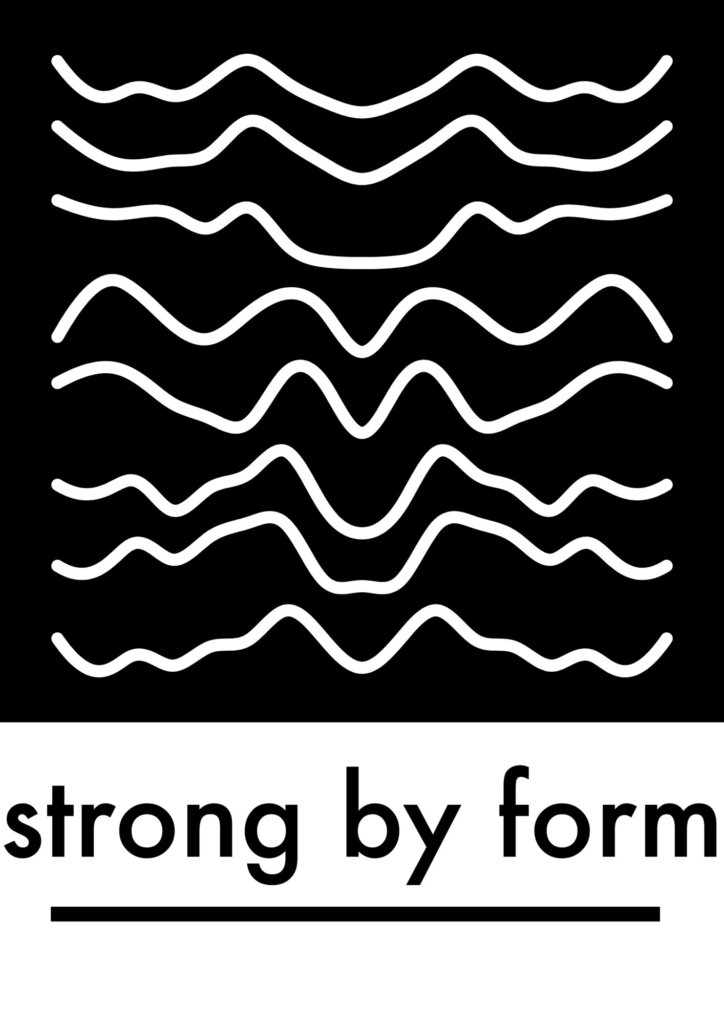
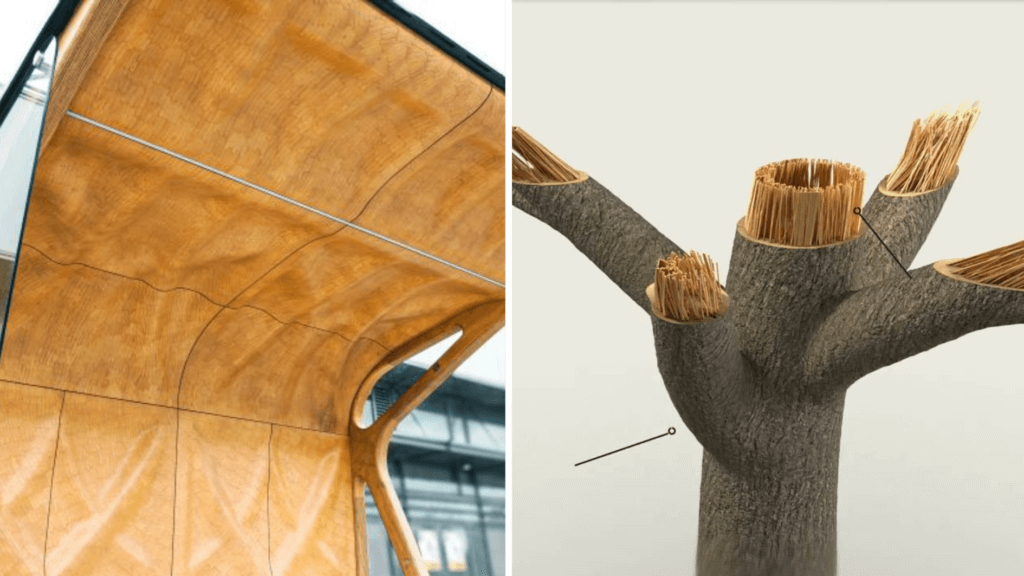

2022 Cohort / Santiago, Chile
Strong by Form
In nature, trees are able to withstand high wind and snow stresses by growing the right form, density, and fiber orientations. This allows natural wood to achieve a specific strength that is even higher than that of steel. By combining material science with the latest digital optimization tools, Strong by Form has developed Woodflow, a fabrication technology that follows these natural form functions. Their proprietary additive manufacturing process can create high performance, ultralight, timber-based structural composites for the construction and mobility industries at a fraction of their environmental impact.View Strong by Form websiteSDGs
11 - Sustainable Cities and Communities 12 - Responsible Consumption 9 - Innovation and Infrastructure
Verticals
Built Environment Manufacturing and Advanced Robotics
Read more about Strong by Form on AskNature -

2022 Cohort / San Francisco, CA, USA
Sóliome
Sunscreen has become a part of the daily routine for millions of consumers, however the current market choices often contain toxic chemicals or are damaging to sensitive organisms like coral. Sóliome has created a novel sunscreen inspired by compounds that naturally concentrate in the lens of the human eye to absorb UVA and UVB radiation. By isolating and stabilizing this molecule, Sóliome is able to create a safe, affordable, and environmentally friendly sunscreen.View Sóliome websiteSDGs
12 - Responsible Consumption 14 - Life Below Water 3 - Good Health
Verticals
Biotechnology Consumer Products / Cosmetics / Textiles Life Sciences and Medtech
Read more about Sóliome on AskNature -
Leverages fungi to transform industrial waste into reusable materials.
Mycocycle
2022 Cohort / Bolingbrook, IL, USA
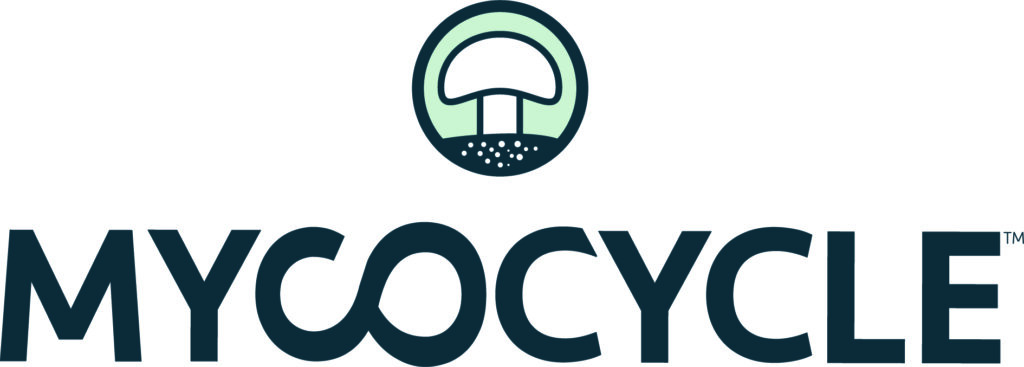
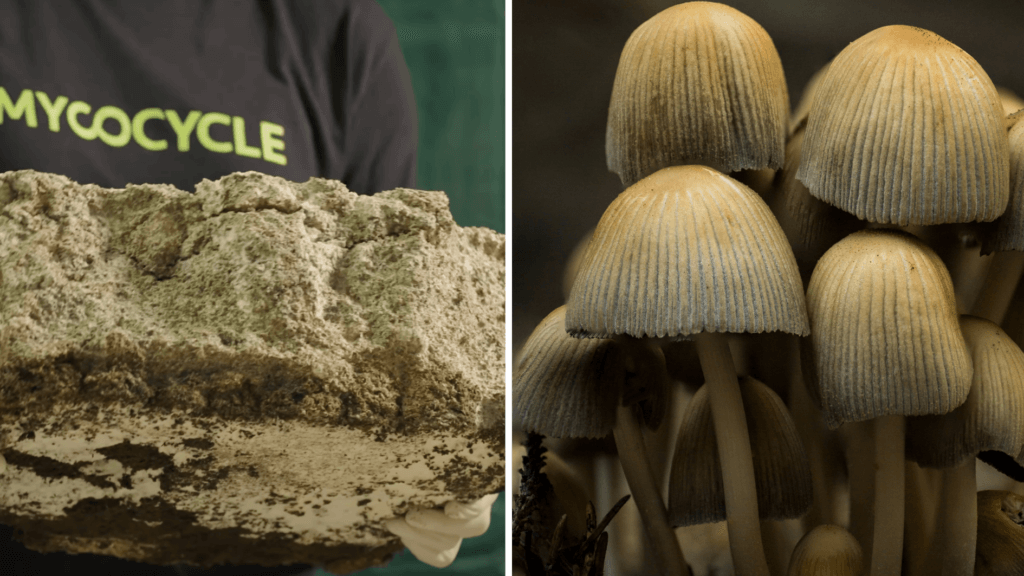

2022 Cohort / Bolingbrook, IL, USA
Mycocycle
Mycocycle works with nature’s master decomposers, fungi, to break down complex waste streams such as construction materials and asphalt. Using a systems-level biomimicry approach, Mycocycle’s process enables a circular industrial supply chain, becoming ever more important as landfills reach capacity. To accomplish this, Mycocycle first optimizes fungi in a lab to decompose specific waste streams. Then, they remediate the waste on site in collaboration with manufacturers, recyclers, and waste management companies. The resulting by-product can then be used to create new products.View Mycocycle websiteSDGs
11 - Sustainable Cities and Communities 12 - Responsible Consumption 9 - Innovation and Infrastructure
Verticals
Built Environment Conservation and Remediation
Read more about Mycocycle on AskNature -
Materials for lightweight, adaptive structures at full scale.
Metavoxel
2022 Cohort / Seattle, WA, USA
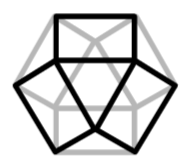


2022 Cohort / Seattle, WA, USA
Metavoxel
Low-density, high-performance cellular materials like bone, bamboo, and marine sponges are nature’s way of doing more with less, providing structural efficiency and multifunctionality across scale. The key is in the specific internal cellular geometry. Metavoxel recreates these cellular geometries to produce lightweight and strong metamaterials which can improve structural efficiency and reduce the cost and environmental footprint of the built environment. The goal for Metavoxel is to do more with less—to conserve energy and material resources while accomplishing specific mechanical and structural objectives.View Metavoxel websiteSDGs
11 - Sustainable Cities and Communities 12 - Responsible Consumption 9 - Innovation and Infrastructure
Verticals
Built Environment
Read more about Metavoxel on AskNature -
Developing truly compostable plastic and other self-degrading products.
Intropic Materials
2022 Cohort / Oakland, CA, USA
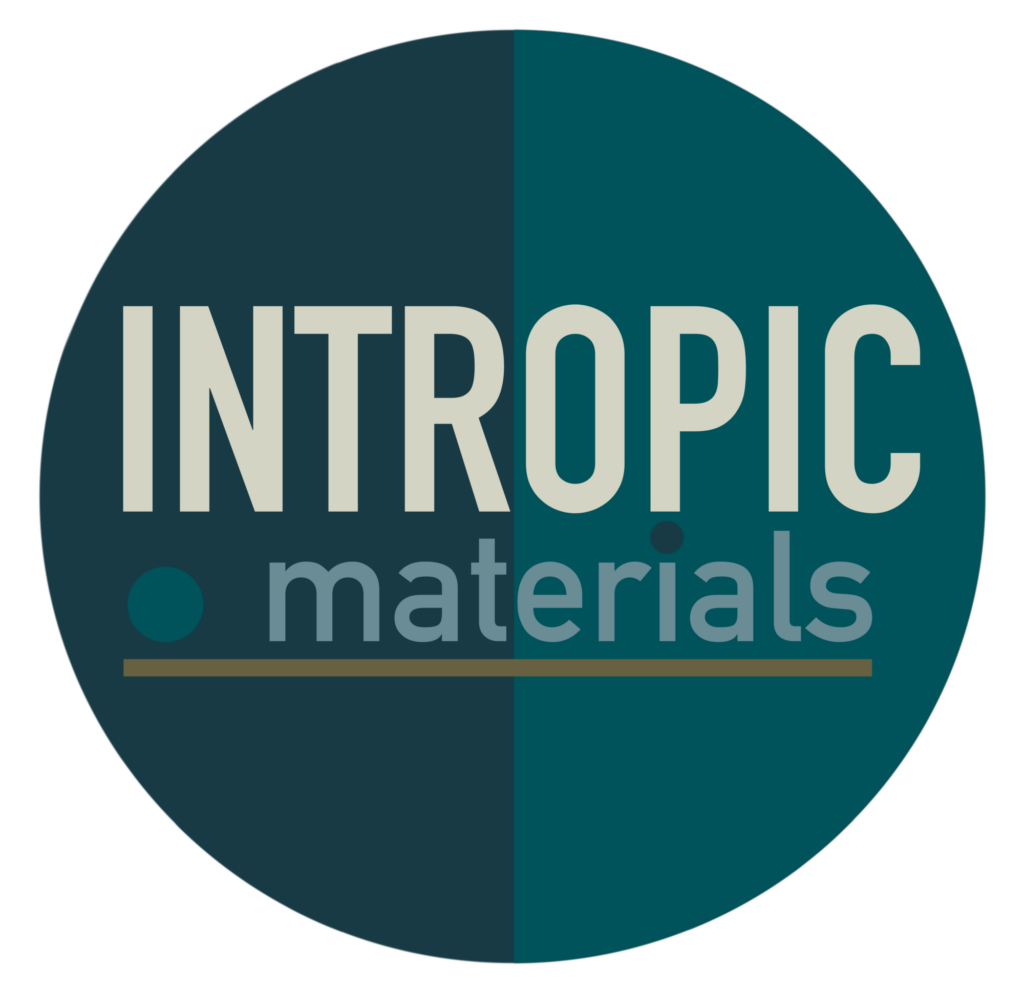
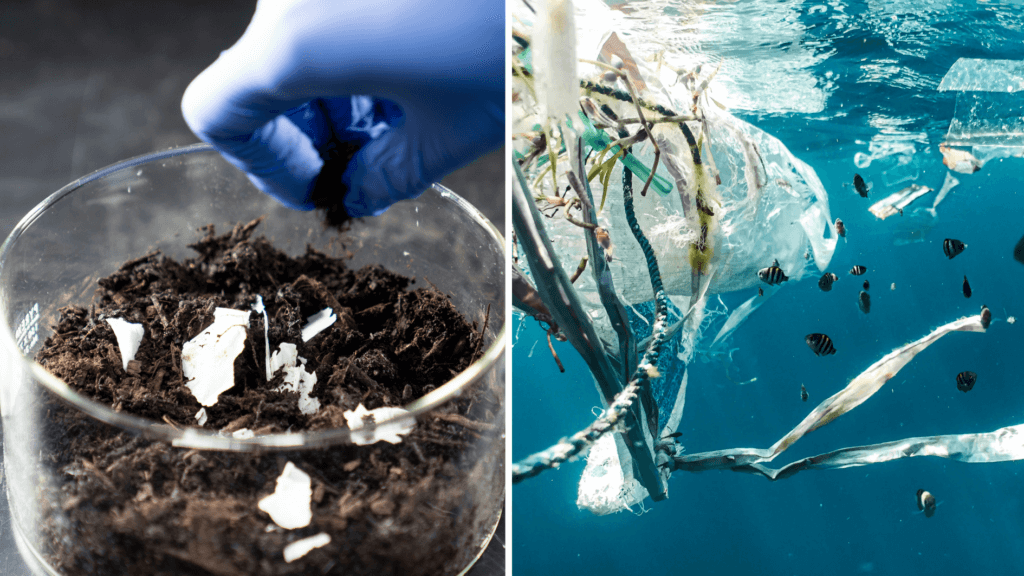

2022 Cohort / Oakland, CA, USA
Intropic Materials
Intropic Materials is solving plastic waste from the inside out by embedding enzymes directly inside plastics to aid and significantly speed up natural degradation. These plastics rapidly and completely break-down at the end of use into biodegradable or chemically recyclable small molecules without producing microplastics, in accessible life-friendly conditions like warm water baths or compost. This is enabled by their proprietary enzyme stabilization platform, designed to function similarly to chaperone proteins, which protect and preserve enzymatic structure and function in foreign environments. By bringing together natural and synthetic materials, Intropic Materials is unlocking a more innovative and sustainable future.View Intropic Materials websiteSDGs
12 - Responsible Consumption 6 - Clean Water and Sanitation 9 - Innovation and Infrastructure
Verticals
Biotechnology Chemistry and Materials
Read more about Intropic Materials on AskNature -
Agri-biotech company extending the shelf life of produce to minimize food waste.
GreenPod Labs
2022 Cohort / Chennai, Tamil Nadu, India
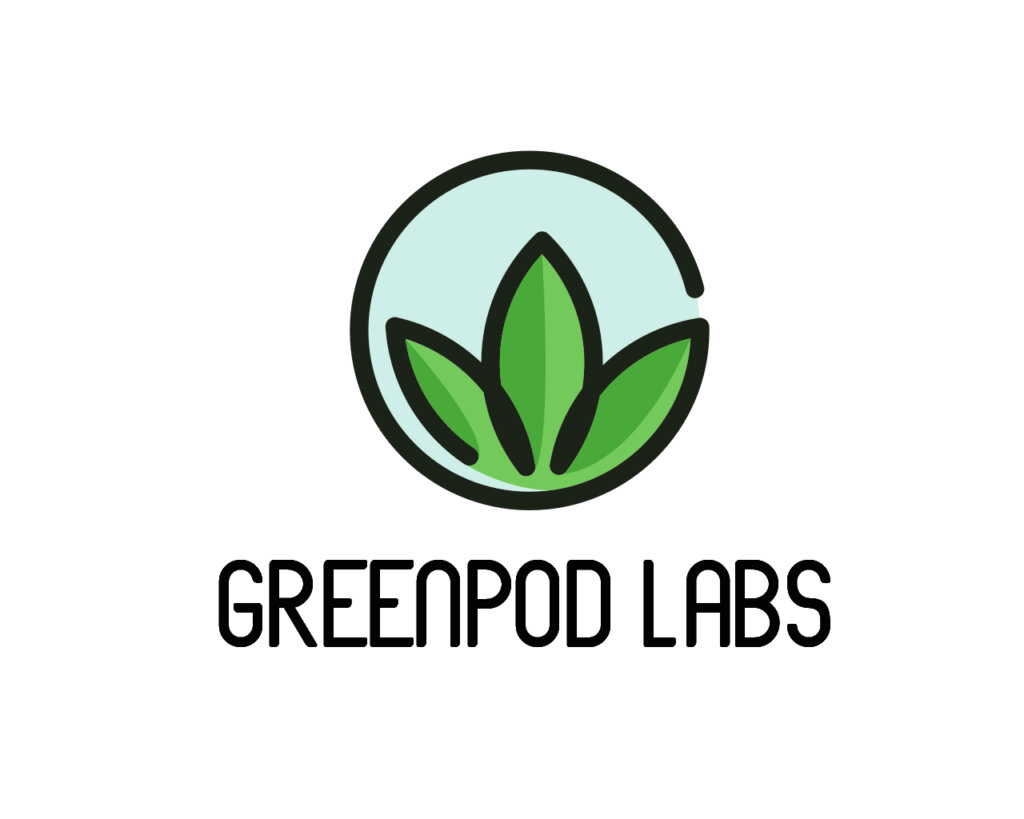
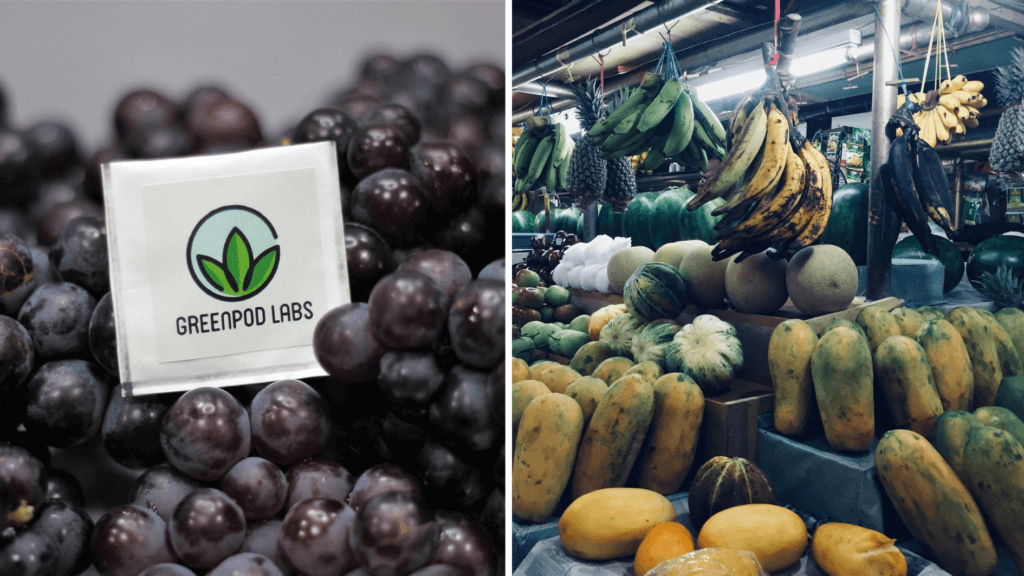

2022 Cohort / Chennai, Tamil Nadu, India
GreenPod Labs
India is the second largest producer of fruits and vegetables, but ~40% of fresh produce is lost before it reaches consumers. GreenPod Labs have created bio-inspired packaging sachets that release plant based volatiles to activate the built-in defense mechanism within specific fruits or vegetables, in order to slow down the ripening rate and minimize microbial growth. By understanding crop physiology and spoilage types, GreenPod Labs is able to create the right formulation for produce to fight against biotic and abiotic stresses at ambient temperature, lessening the need for cold storage and cold supply chains.View GreenPod Labs websiteSDGs
12 - Responsible Consumption 13 - Climate Action 2 - No Hunger
Verticals
Biotechnology Food and Agriculture
Read more about GreenPod Labs on AskNature -
Creates laser-generated surface textures inspired by textures found in nature.
Fusion Bionic GmbH
2022 Cohort / Dresden, Germany

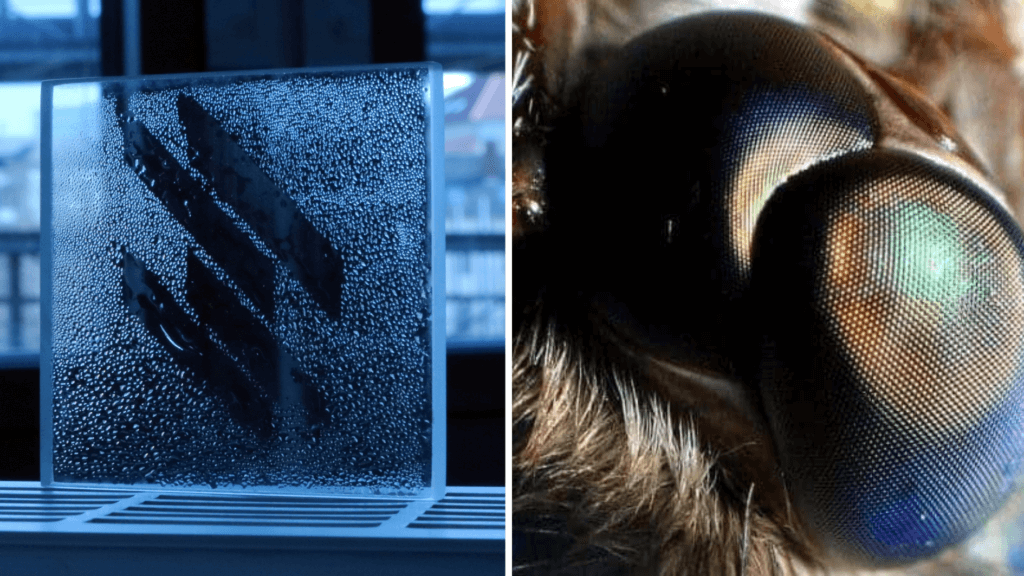

2022 Cohort / Dresden, Germany
Fusion Bionic GmbH
Fusion Bionic creates laser-generated surface textures inspired by textures found in nature, opening up new possibilities for functionalized surfaces. Their Direct Laser Interference Patterning (DLIP) can create micro- and nano-scale surface textures on which, for example, ice does not stick, (anti-icing for e.g. aviation), glass surfaces of smartphones do not reflect (anti-reflective), and implants are better accepted by the body (biocompatible, antibacterial). All of these surface textures replace ecologically harmful processes, such as chemical de-icing, sand-blasting, or etching, while meeting the demand of increased product performance via industrial-scale surface finishing.View Fusion Bionic GmbH websiteSDGs
12 - Responsible Consumption 7 - Renewable Energy 9 - Innovation and Infrastructure
Verticals
Chemistry and Materials Manufacturing and Advanced Robotics
Read more about Fusion Bionic GmbH on AskNature -
Creates high performing and sustainable renewable energy systems.
Biome Renewables
2022 Cohort / Toronto, Ontario, CA



2022 Cohort / Toronto, Ontario, CA
Biome Renewables
Biome Renewables is an engineering and design firm that learns from nature to create higher performing and more sustainable renewable energy systems. Their first product, the PowerCone®, is a wind turbine retrofit inspired by the aerodynamics of a falling maple seed, which moves through the air with a pattern of least resistance. The PowerCone, which is a second smaller rotor bolted to the hub of existing wind turbines, can increase the annual energy production of a wind turbine, while minimizing the amount of loads and vibrations experienced by the turbine. Currently, they are bringing their second technology to market: a serrations technology that mimics an owl’s wing to deliver quieter wind turbine performance. Recent wind tunnel testing in Germany revealed noise reductions up to 4 dB.View Biome Renewables websiteSDGs
13 - Climate Action 7 - Renewable Energy 9 - Innovation and Infrastructure
Verticals
Manufacturing and Advanced Robotics Renewable Energy
Read more about Biome Renewables on AskNature -
Developed a recyclable and PFC-free alternative to traditional waterproof breathable textiles in the outdoor and sportswear industry.
Amphico
2022 Cohort / London, UK
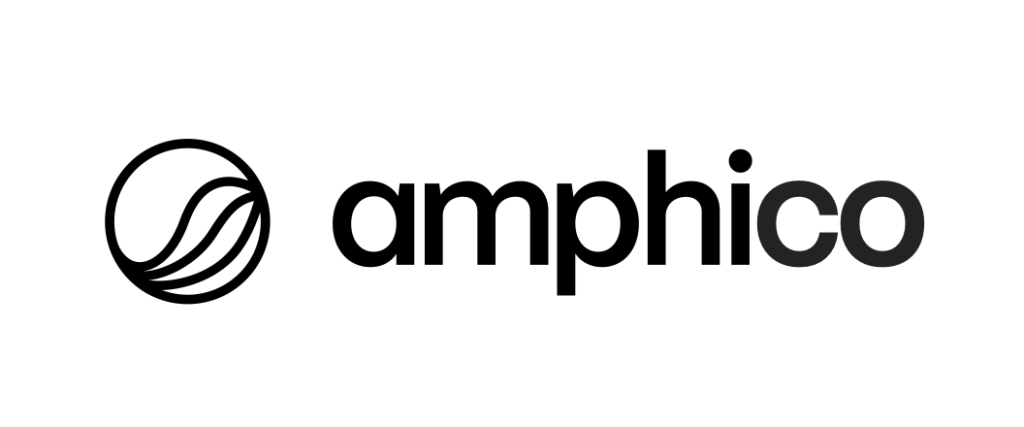
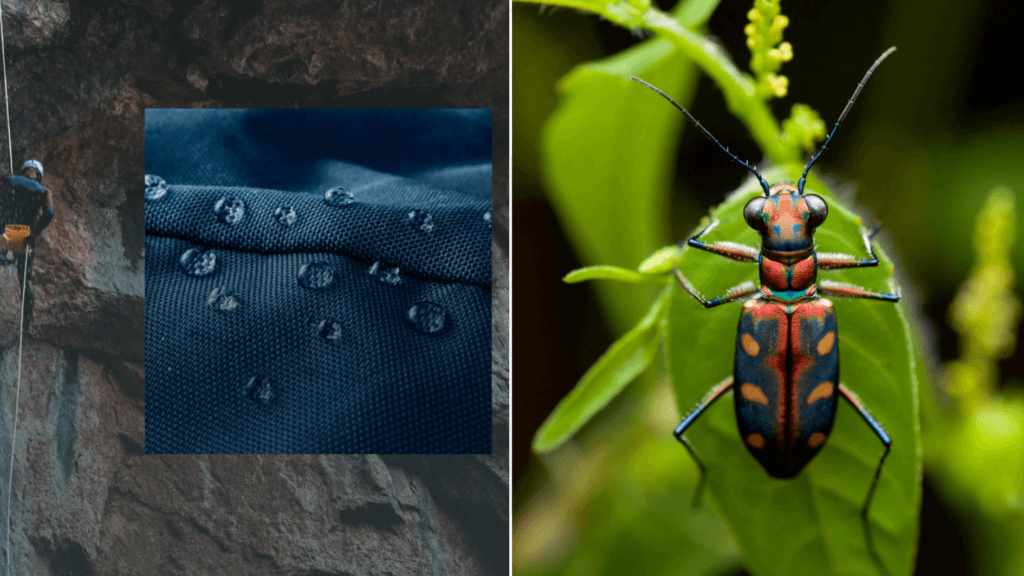

2022 Cohort / London, UK
Amphico
Developed a recyclable and PFC-free alternative to traditional waterproof breathable textiles in the outdoor and sportswear industry.View Amphico websiteSDGs
12 - Responsible Consumption 6 - Clean Water and Sanitation 9 - Innovation and Infrastructure
Verticals
Chemistry and Materials Consumer Products / Cosmetics / Textiles
Read more about Amphico on AskNature -
Mimics spider spinnerets’ ability to spin fiber at room temperature without harsh chemicals, from a liquid gel.
Spintex
2021 Cohort / Oxford, UK

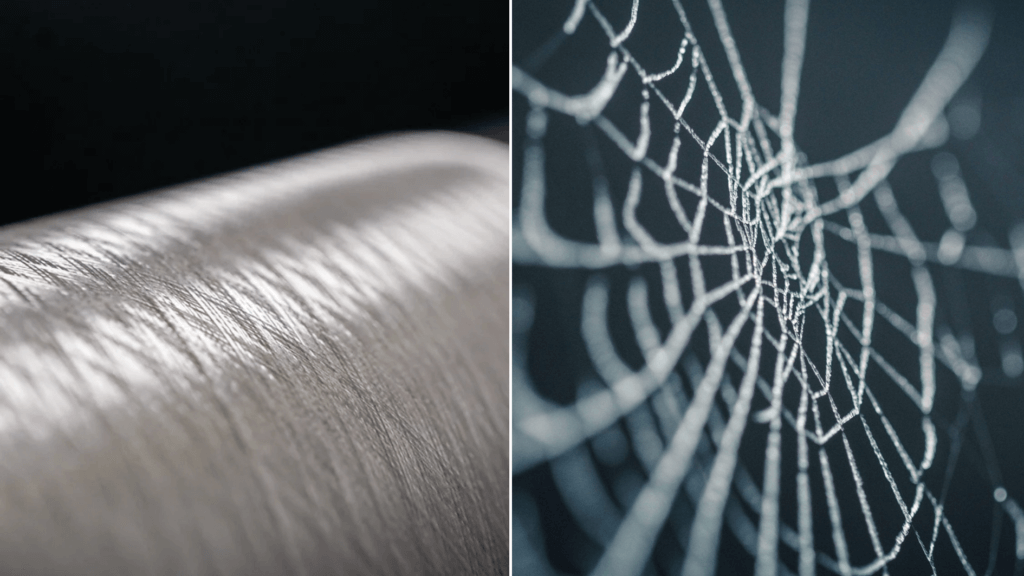

2021 Cohort / Oxford, UK
Spintex
Spider silk is often cited as one of the strongest biological materials in the world, and scientists have long been searching for a way to artificially synthesize this silk for human use as a textile fiber. Spintex Engineering has finally cracked the spider’s code and has developed a solution that mimics a spider spinnerets’ ability to spin fiber at room temperature without harsh chemicals, from a liquid gel. The process is 1,000 times more energy efficient than synthetic, petroleum fibers, with water as the only byproduct.View Spintex websiteSDGs
11 - Sustainable Cities and Communities 12 - Responsible Consumption 9 - Innovation and Infrastructure
Verticals
Chemistry and Materials Consumer Products / Cosmetics / Textiles
Read more about Spintex on AskNature -

2021 Cohort / Fribourg, Switzerland
Seprify
Titanium dioxide (TiO2) is the most used colorant in the world, found in the white traffic stripes painted on roads, in toothpaste, and even in powdered donuts. However, titanium mining has an environmental cost, and nanoparticles of titanium dioxide (which can be found in small quantities in food-grade TiO2) have recently been labeled as a potential carcinogen. In search of an alternative white colorant, researchers studying the bright white Cyphochilus beetle found that the thin layer of scales on its exoskeleton acts as a highly optimized scattering structure, giving the beetle its bright white coloration. Seprify is mimicking this structure with cellulose, creating a safer and better performing white pigment.View Seprify websiteSDGs
11 - Sustainable Cities and Communities 12 - Responsible Consumption 9 - Innovation and Infrastructure
Verticals
Chemistry and Materials Consumer Products / Cosmetics / Textiles
Read more about Seprify on AskNature -
Enables precise and sustainable recovery of valuable resources from water.
Retein
2021 Cohort / Stora Höga, Sweden

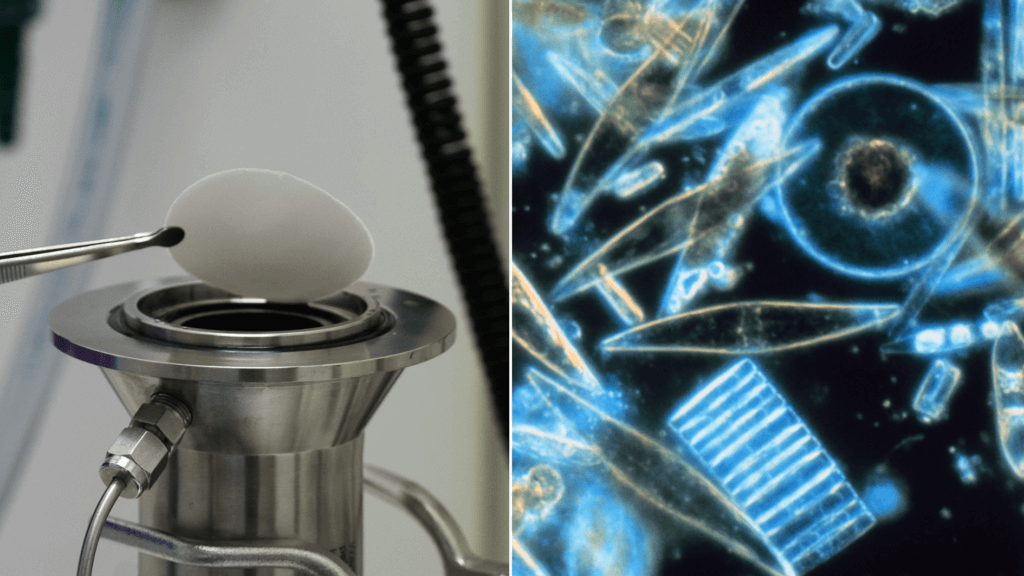

2021 Cohort / Stora Höga, Sweden
Retein
Retein is on the cusp of revolutionizing the water purification industry. The team is mimicking the way diatoms form their cell wall out of silica and utilizing aquaporins, proteins that transport pure water across cell membranes throughout nature. Their energy-efficient and selective technology produces high purity grade water in a single filter pass, desalination at any scale, and removes industrial pollutants and contaminants such as arsenic, microplastics, and pharmaceutical residues. In addition, their technology enables the capture of molecules such lithium and phosphorus.View Retein websiteSDGs
11 - Sustainable Cities and Communities 6 - Clean Water and Sanitation 9 - Innovation and Infrastructure
Verticals
Biotechnology Chemistry and Materials Water
Read more about Retein on AskNature -
Produces fiber from hemp, using inherently clean methods.
Renaissance Fiber
2021 Cohort / Wilmington, NC, USA

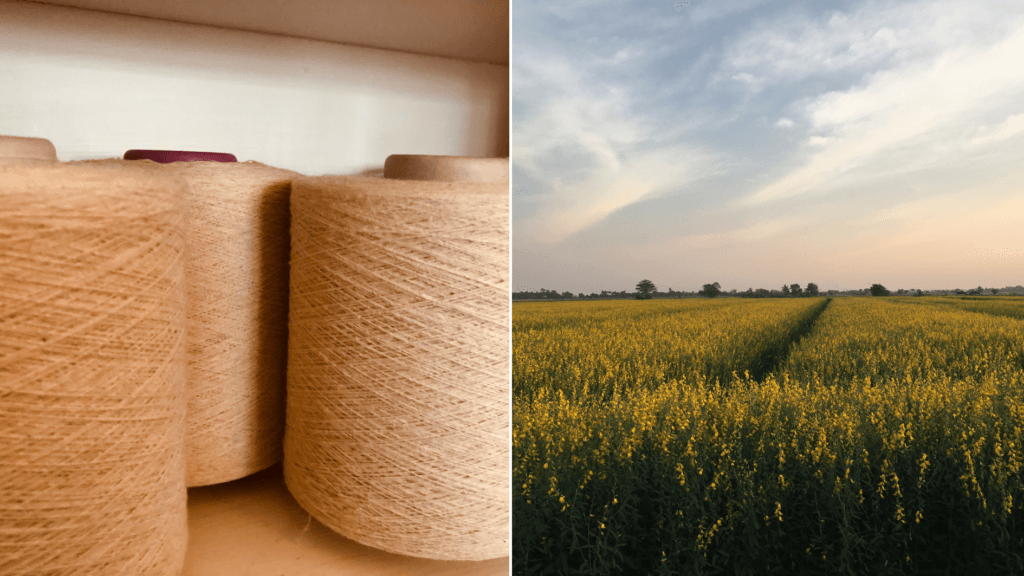

2021 Cohort / Wilmington, NC, USA
Renaissance Fiber
Cultivating hemp for textile fiber is an ancient practice, however with the advent of modern agriculture and the invention of synthetic textiles, the processing required for hemp meant it could not compete economically with these alternatives. Renaissance Fiber has developed a degumming method based on natural degradation of plant fibers observed in tidal streams, using far less energy than traditional hemp processing and creating hemp fiber that is more affordable and higher quality than other fiber types. At the same time, their process sequesters carbon in the effluent, which can be returned to the ocean as a natural carbon sink.View Renaissance Fiber websiteSDGs
12 - Responsible Consumption 6 - Clean Water and Sanitation 9 - Innovation and Infrastructure
Verticals
Consumer Products / Cosmetics / Textiles Food and Agriculture
Read more about Renaissance Fiber on AskNature -
Biotech platform to develop fungal bioremediation & bioconversion.
Novobiom
2021 Cohort / Louvain-la-Neuve, Belgium

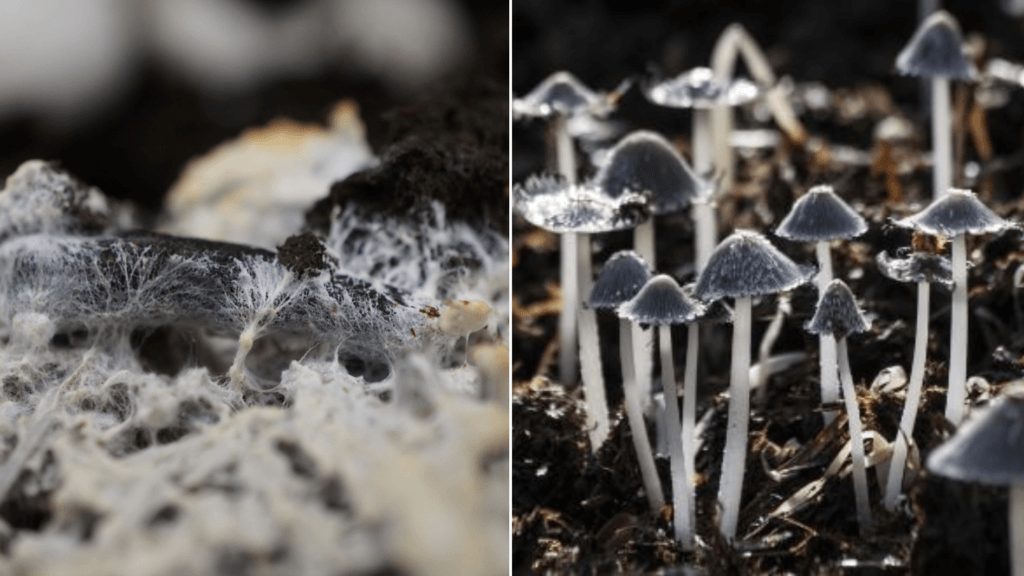

2021 Cohort / Louvain-la-Neuve, Belgium
Novobiom
Novobiom is tapping nature’s most powerful recyclers, fungi and microorganisms, for use in brownfields, superfund sites, and other contaminated industrial land. By selecting for naturally occurring fungi that target specific contaminants such as oil or heavy metals, they perform mycoremediation on site, without the need for hauling away soil to a central treatment facility. Novobiom has the potential to revitalize millions of contaminated sites around the world by naturally decomposing harmful toxins through this systems-level biomimetic approach.View Novobiom websiteSDGs
11 - Sustainable Cities and Communities 15 - Life on Land 6 - Clean Water and Sanitation
Verticals
BlueTech Conservation and Remediation
Read more about Novobiom on AskNature -
Produces cost-competitive, low-carbon chemicals using biomass & CO2 feedstocks via a light-driven photocatalysis platform.
New Iridium
2021 Cohort / Superior, CO, USA

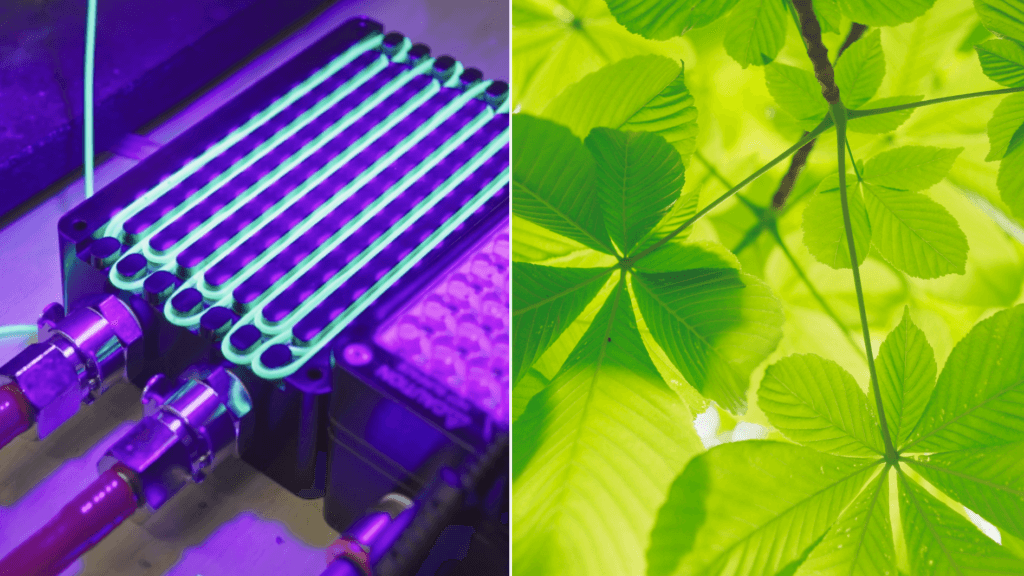

2021 Cohort / Superior, CO, USA
New Iridium
New Iridium has created a suite of organic chemicals that enable photocatalysis, or light-driven chemistry, eliminating the need for heavy metals or heat as catalysts. Their technology dramatically reduces the energy and time required for a wide variety of chemical reactions, lowering costs and paving the way for green chemistry to become industry standard. With products currently being used by pharmaceutical and chemical companies, New Iridium is working toward developing a platform that mimics photosynthesis by using light energy to convert water and CO2 into chemical energy.View New Iridium websiteSDGs
12 - Responsible Consumption 13 - Climate Action 9 - Innovation and Infrastructure
Verticals
Chemistry and Materials Climate Tech
Read more about New Iridium on AskNature -
Identifies, develops, and commercializes a wide range of adhesive systems.
Mussel Polymers
2021 Cohort / Bethlehem, PA, USA

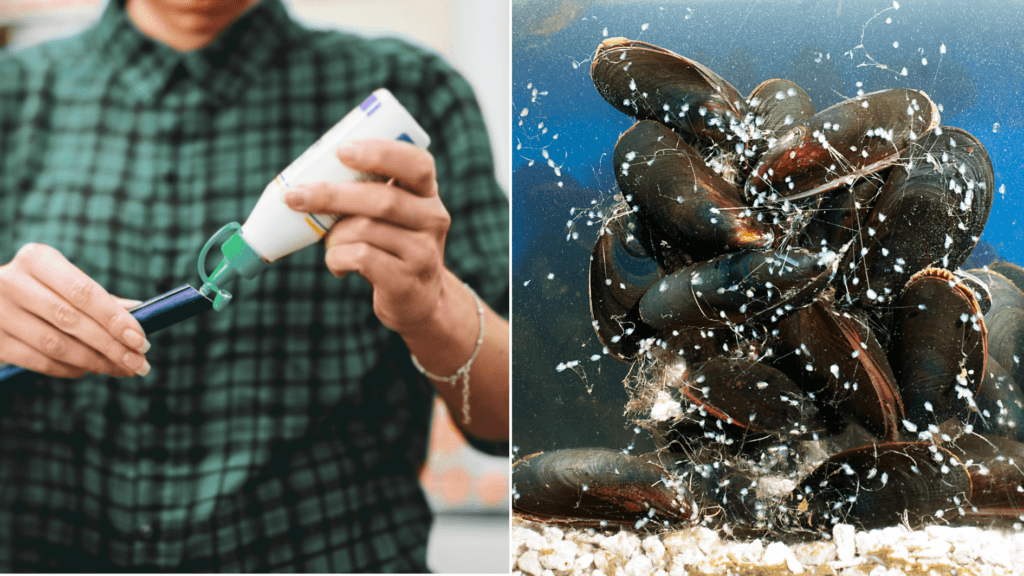

2021 Cohort / Bethlehem, PA, USA
Mussel Polymers
Mussel Polymers has developed a high-performance, non-toxic adhesive known as poly (catechol)styrene, or PCS, mimicking the adhesive proteins mussels use to adhere to surfaces in extreme marine environments. PCS is 300% stronger than other underwater adhesives, and bonds to a wide range of materials. Mussel Polymers will be used in a number of industries, but they are bringing their product to market first for coral restoration, solving a critical problem within the conservation ecosystem.View Mussel Polymers websiteSDGs
12 - Responsible Consumption 14 - Life Below Water 9 - Innovation and Infrastructure
Verticals
BlueTech Chemistry and Materials Life Sciences and Medtech
Read more about Mussel Polymers on AskNature -
Enables sustainable, compliant, and efficient cooling for essential industries.
Infinite Cooling
2021 Cohort / Somerville, MA, USA

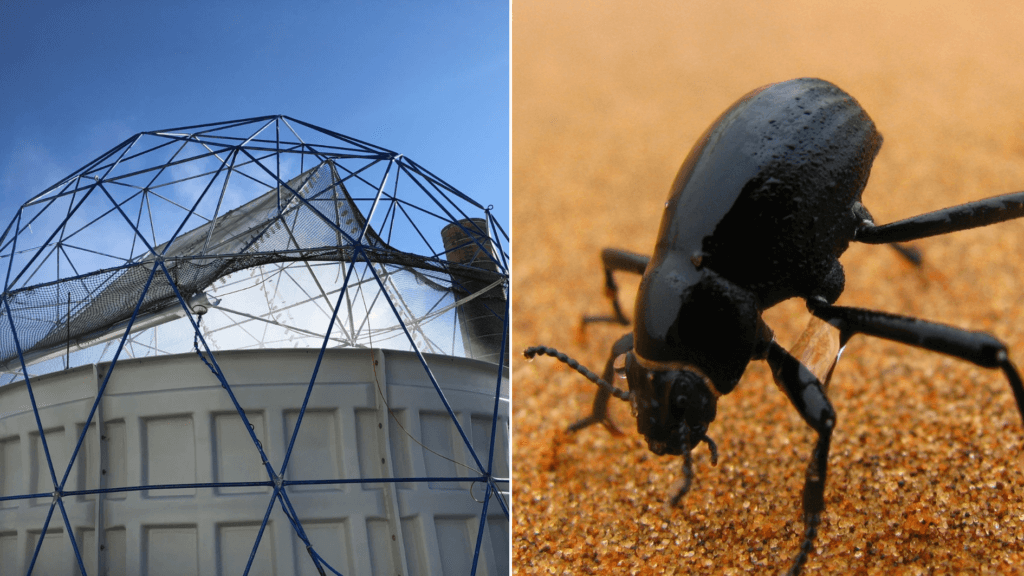

2021 Cohort / Somerville, MA, USA
Infinite Cooling
Infinite Cooling has developed an add-on process to capture water droplets from cooling tower plumes, enhancing fog harvesting strategies deployed by animals such as the Namib desert beetle. By partially closing the water cycle loop at industrial facilities, Infinite Cooling helps customers save millions of dollars and hundreds of millions of gallons of water annually.View Infinite Cooling websiteSDGs
12 - Responsible Consumption 6 - Clean Water and Sanitation 9 - Innovation and Infrastructure
Verticals
Manufacturing and Advanced Robotics Water
Read more about Infinite Cooling on AskNature -
Created proprietary concrete mixes to sustain healthy oyster populations.
GROW Oyster Reefs
2021 Cohort / Charlottesville, VA, USA

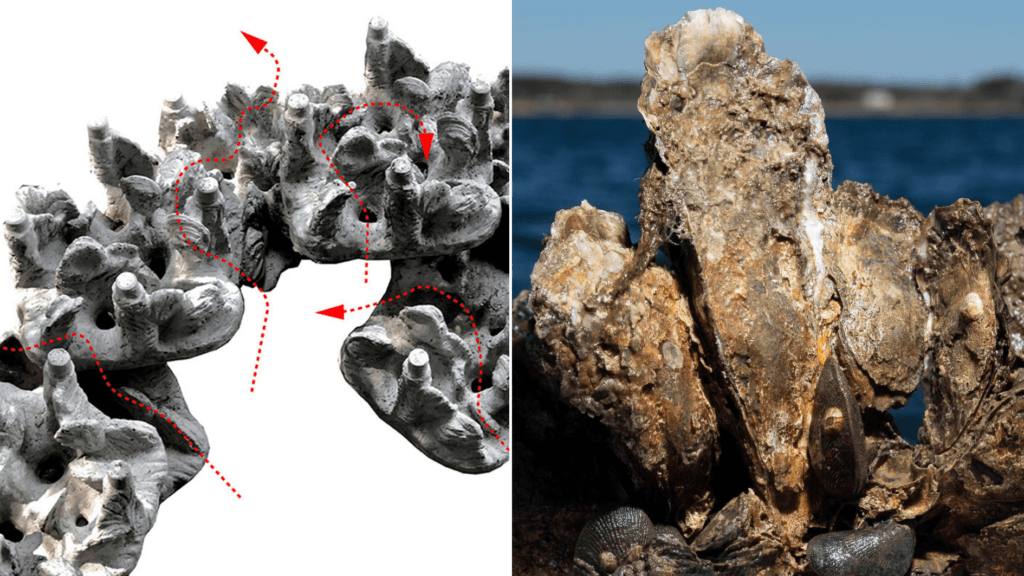

2021 Cohort / Charlottesville, VA, USA
GROW Oyster Reefs
Oysters are critical to maintaining healthy coastlines. They clean the water and create reefs that protect coastlines from ocean swells. To help revitalize oyster populations, GROW Oyster Reefs has created proprietary concrete mixes that are chemically similar to oyster shells, with micro- and macro-designs that attract and retain healthy oyster populations. By working with nature to restore coastal ecosystems, GROW Oyster Reef’s products enable long-lasting habitat restoration.View GROW Oyster Reefs websiteSDGs
13 - Climate Action 14 - Life Below Water 9 - Innovation and Infrastructure
Verticals
BlueTech Conservation and Remediation
Read more about GROW Oyster Reefs on AskNature -

2021 Cohort / London, UK
Biohm
Biohm is a bio-based building materials company that makes insulation made from mycelium (the “root” structure of mushrooms) and a 100% natural sheet material called ORB (organic refuse bio-compound) made out of biowaste and a plant-based binder. Their building materials are more affordable and outperform current products on the market. By embracing circular design and the systemic nutrient cycling found in nature, Biohm is leading innovation in the construction industry to create a more sustainable built environment.View Biohm websiteSDGs
11 - Sustainable Cities and Communities 12 - Responsible Consumption 9 - Innovation and Infrastructure
Verticals
Built Environment Conservation and Remediation
Read more about Biohm on AskNature -

2020 Cohort / New York, NY, USA
Werewool
Werewool is creating a revolutionary fiber development platform to create biodegradable fibers with tailored aesthetic and performance properties. Inspired by nature, and utilizing the tools of biotechnology, Werewool is developing a platform to design fibers at the DNA level for sustainable textiles with inherent properties such as color, moisture management, and stretch, that meet the demands of today’s consumers. The team identifies protein structures found in nature, such as the red fluorescent protein found in some species of Discosoma, a coral relative. They then grow fibers that are reliant on these proteins, creating textiles without the need for toxic dyes, finishes, and petroleum based synthetics.View Werewool websiteSDGs
11 - Sustainable Cities and Communities 12 - Responsible Consumption 13 - Climate Action
Verticals
Biotechnology Consumer Products / Cosmetics / Textiles
Read more about Werewool on AskNature -
Makes a sprayable coating that repels liquid, sludge, bacteria, mineral deposits, and more.
spotLESS Materials
2020 Cohort / State College, PA, USA

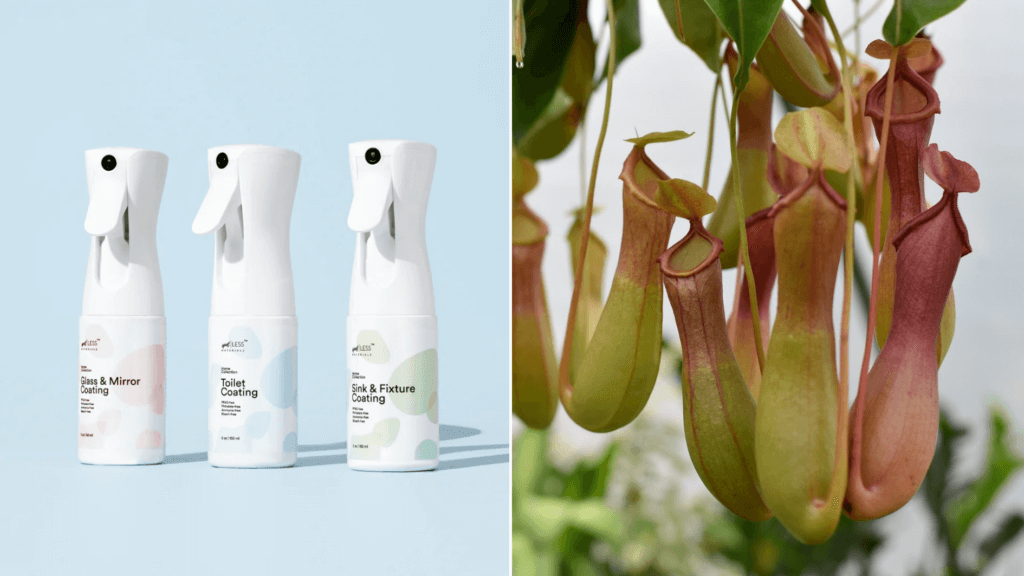

2020 Cohort / State College, PA, USA
spotLESS Materials
spotLESS is a sprayable coating that repels liquid, sludge, bacteria, mineral deposits, and more. It contains a liquid-infused nanosponge that was inspired by the slippery surface of the pitcher plant. spotLESS can keep surfaces like toilets clean, drastically reducing the amount of water and cleaning chemicals required. It is available for home use, and can be sprayed onto glass and ceramic at ambient conditions.View spotLESS Materials websiteSDGs
11 - Sustainable Cities and Communities 3 - Good Health 6 - Clean Water and Sanitation
Verticals
Chemistry and Materials Consumer Products / Cosmetics / Textiles Water
Read more about spotLESS Materials on AskNature -
Increases the effectiveness of commercially available beneficial nematodes.
Pheronym
2020 Cohort / Davis, CA, USA

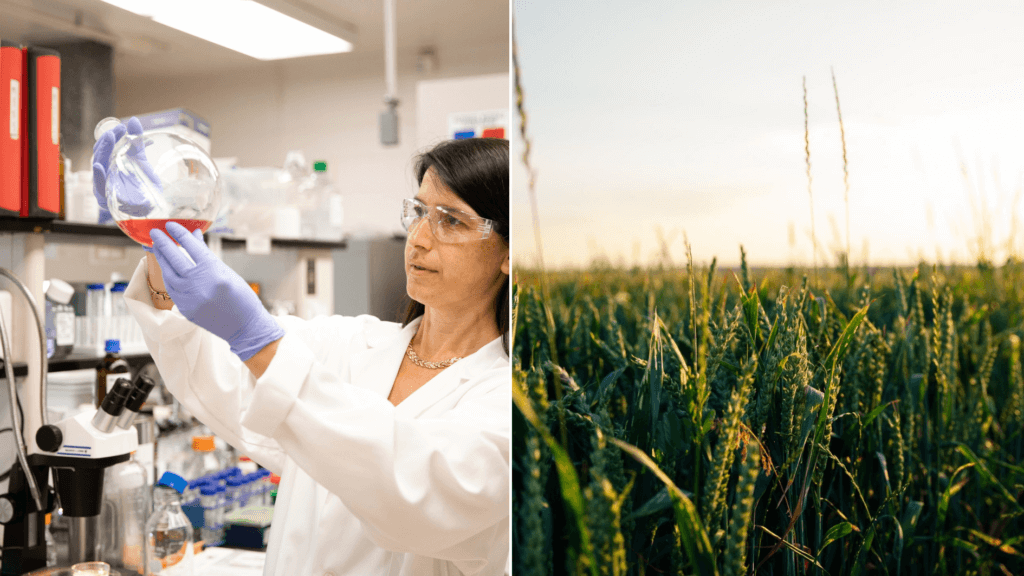

2020 Cohort / Davis, CA, USA
Pheronym
Pheronym increases the effectiveness of commercially available beneficial nematodes (microscopic roundworms) by tapping into their natural communication platform, pheromones. These pheromones tell beneficial nematodes to be more effective and efficient predators, and also trick parasitic nematodes into thinking there are no food sources nearby. This allows for the widespread adoption of a proven organic farming technique and provides eco-friendly agricultural pest control.View Pheronym websiteSDGs
13 - Climate Action 15 - Life on Land 2 - No Hunger
Verticals
Biotechnology Food and Agriculture
Read more about Pheronym on AskNature -
Developed natural solutions to replace harmful synthetic chemicals such as pesticides and preservatives.
Nanomik Biotechnology
2020 Cohort / Istanbul, Turkey

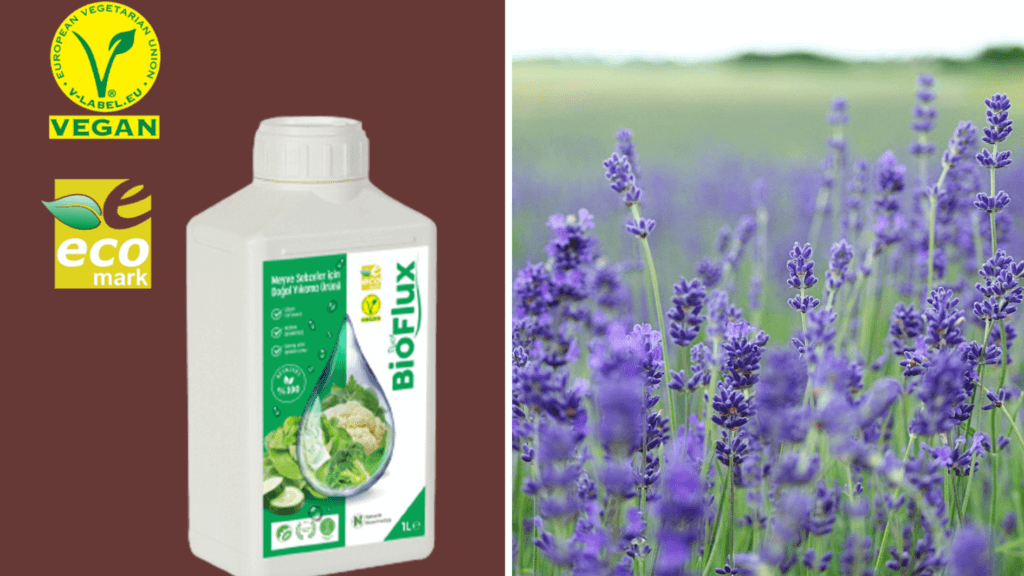

2020 Cohort / Istanbul, Turkey
Nanomik Biotechnology
Nanomik Biotechnology has developed natural solutions to replace harmful synthetic chemicals such as pesticides and preservatives commonly used in the food and ag industry. Inspired by the defensive system of plants in nature, which use anti-fungal compounds to naturally deter fungi, Nanomik has encapsulated these compounds to create a liquid fungicide that can be applied to crops in the field as well as after harvest. When a fungus starts to grow on the surface of a fruit or vegetable, it makes the pH of the plant surface more acidic. This causes the capsule containing the anti-fungal compounds to break open, killing the fungus.View Nanomik Biotechnology websiteSDGs
13 - Climate Action 15 - Life on Land 2 - No Hunger
Verticals
Biotechnology Food and Agriculture
Read more about Nanomik Biotechnology on AskNature -
Developed 3-D nanostructured materials capable of catalytically breaking down VOCs and particulates.
Metalmark Innovations
2020 Cohort / Boston, MA, USA

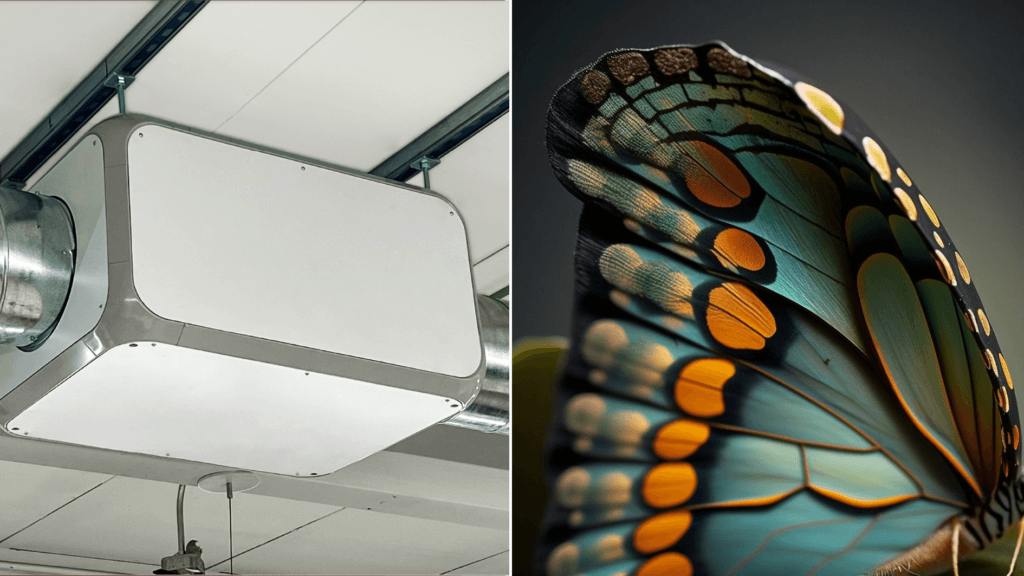

2020 Cohort / Boston, MA, USA
Metalmark Innovations
Inspired by the nanostructures on the surface of butterfly wings, Metalmark has developed 3-D nanostructured materials capable of catalytically breaking down volatile organic compounds (VOCs), ultra-fine particulates, and odor-producing chemicals below 0.3 microns. When used in an air cleaning system, it breaks down pollutants without the formation or release of secondary contaminants.View Metalmark Innovations websiteSDGs
11 - Sustainable Cities and Communities 12 - Responsible Consumption 3 - Good Health
Verticals
Built Environment Chemistry and Materials
Read more about Metalmark Innovations on AskNature -
Developed advanced composite architectures designed to improve impact resistance.
Helicoid Industries Inc.
2020 Cohort / La Quinta, CA, USA
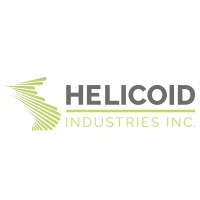


2020 Cohort / La Quinta, CA, USA
Helicoid Industries Inc.
Helicoid™ Technology mimics the ‘helicoid’ structure found in the incredibly strong and lightweight mantis shrimp club. By incorporating this design into composite materials, companies can create products with reduced weight, increased strength, increased toughness, and improved impact resistance, all while reducing material costs. The technology works seamlessly with existing manufacturing processes, allowing any composite industry to use less material while making a stronger product.View Helicoid Industries Inc. websiteSDGs
11 - Sustainable Cities and Communities 12 - Responsible Consumption 9 - Innovation and Infrastructure
Verticals
Built Environment Manufacturing and Advanced Robotics
Read more about Helicoid Industries Inc. on AskNature -
Offers innovative, robust and environmentally sensitive concrete solutions to support marine life.
ECOncrete
2020 Cohort / Tel Aviv, Israel

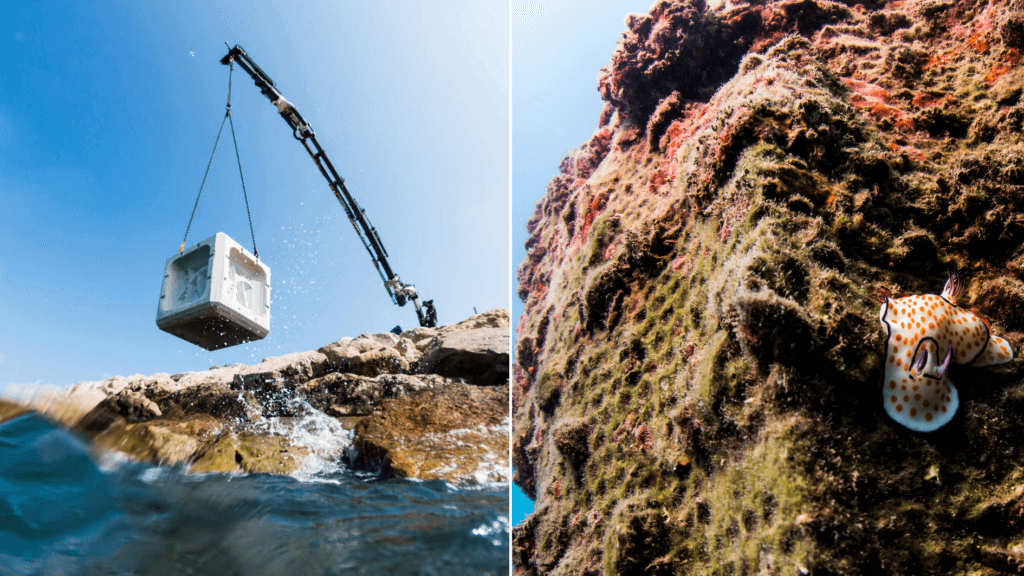

2020 Cohort / Tel Aviv, Israel
ECOncrete
ECOncrete provides eco-friendly concrete solutions that promote marine life growth in urban and coastal infrastructure like seawalls and bridges. Their proprietary technology combines bio-enhancing concrete, textured surfaces, and science-based designs to reduce ecological impact while improving strength and durability. Inspired by marine habitats, ECOncrete supports natural processes like calcification and coral growth, enhancing structure longevity and resilience to extreme weather. It also acts as a carbon sink, offsetting traditional concrete's carbon footprint, making it cost-competitive for large marine infrastructure projects.View ECOncrete websiteSDGs
13 - Climate Action 14 - Life Below Water 9 - Innovation and Infrastructure
Verticals
BlueTech Built Environment Chemistry and Materials
Read more about ECOncrete on AskNature -
Developed tunable structural color coatings made from commodity materials.
Cypris Materials
2020 Cohort / Berkeley, CA, USA

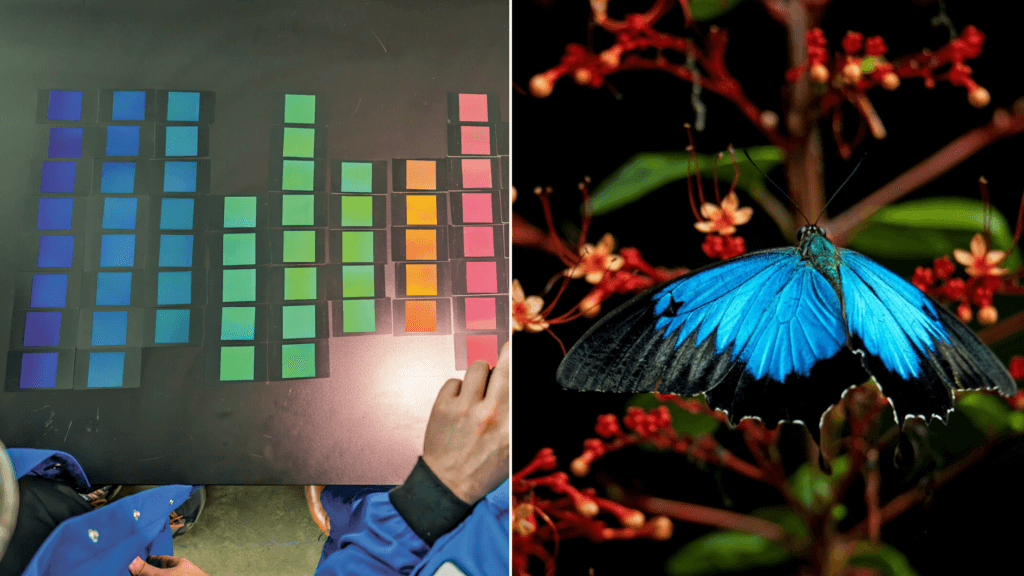

2020 Cohort / Berkeley, CA, USA
Cypris Materials
Cypris Materials has developed a tunable structural color coatings made from commodity materials. When formulated and applied onto a surface, the coating self-assembles into a robust nanostructure that reflects UV, visible, and infrared light, eliminating the need for toxic pigments and dyes. The simplicity of this approach makes it possible to replace multimillion-dollar manufacturing equipment with a simple paint brush. These coatings are designed to replicate the naturally-occurring nanostructures that produce the brilliant colors observed in butterfly wings, peacock feathers, and opal gemstones.View Cypris Materials websiteSDGs
11 - Sustainable Cities and Communities 12 - Responsible Consumption 9 - Innovation and Infrastructure
Verticals
Chemistry and Materials Consumer Products / Cosmetics / Textiles
Read more about Cypris Materials on AskNature -
Developed a new way to dispose of human waste by evaporating out the water.
change:WATER Labs
2020 Cohort / Cambridge, MA, USA
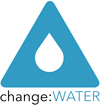
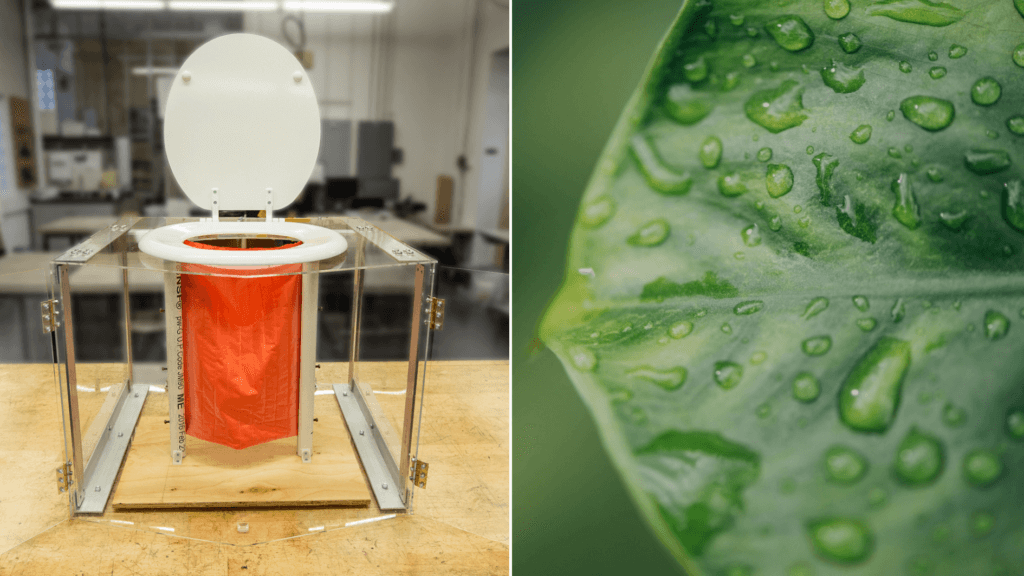

2020 Cohort / Cambridge, MA, USA
change:WATER Labs
changeWATER: Labs has developed a new way to dispose of human waste by evaporating out the water. These low-cost, portable toilets use a simple membrane to rapidly evaporate 95% of sewage without using any type of energy. This provides homes with a working toilet, without the need for power or plumbing. The compact, contained, stand alone units can be dropped into any space quickly, and the ‘self-flushing’ technology works while being completely waterless and environmentally safe. This technology emerged from work done for NASA on wastewater recycling on the International Space Station, and is now being deployed in off-grid rural and refugee communities.View change:WATER Labs websiteSDGs
11 - Sustainable Cities and Communities 3 - Good Health 6 - Clean Water and Sanitation
Verticals
Water
Read more about change:WATER Labs on AskNature -
Created an autonomous robot that slips inside pipes and maps them to “feel” potential leaks.
WatchTower Robotics
2019 Cohort / Cambridge, MA, US


2019 Cohort / Cambridge, MA, US
WatchTower Robotics
Twenty percent of clean water in the world is lost every day through leaking pipes. There are 240,000 pipe breaks every year in the United States alone, and that number is set to rise as the country faces aging infrastructure. Every one of those leaks can cost a municipality hundreds of thousands of dollars. Watchtower Robotics has created an autonomous robot that slips inside pipes and maps them to "feel" potential leaks, even relatively small ones of about a gallon per minute. The design is inspired in part by the blind cavefish, which has channels of water under its skin that sense pressure. Like the spineless octopus, the device can squeeze through narrow crevices. And an umbrella-like top mimics that of a jellyfish, which creates a vortex for more effective swimming.View WatchTower Robotics websiteSDGs
11 - Sustainable Cities and Communities 13 - Climate Action 9 - Innovation and Infrastructure
Verticals
Built Environment Water
Read more about WatchTower Robotics on AskNature -
Invented an underground, eco-friendly sewage treatment system.
ECOSTP
2019 Cohort / Rajajinagar, Bangalore, India


2019 Cohort / Rajajinagar, Bangalore, India
ECOSTP
ECOSTP has invented an underground, eco-friendly sewage treatment system that requires no power, no chemicals, and no moving parts. Their innovative technology uses gravity to circulate sewage and mimics the anaerobic digestive processes of a cow’s stomach. As a result, the ECOSTP is cost effective, has lower operational and maintenance expenses and can be designed to suit existing land use planning.View ECOSTP websiteSDGs
11 - Sustainable Cities and Communities 6 - Clean Water and Sanitation 9 - Innovation and Infrastructure
Verticals
Built Environment Water
Read more about ECOSTP on AskNature -

2019 Cohort / Pittsburgh, PA, US
Aruga
Anodyne Chemistries combines biotechnology and electrochemistry to create low and negative emission chemicals and fuels. This is accomplished through the use of nature’s catalysts, enzymes, to solve the chemical industry’s reliance on fossil fuels, replacing high temperature petrochemistry with a sustainable novel bioprocess called ‘bioelectric manufacturing'. Their core products are Anozymes, engineered enzymes that are designed for industrial synthesis, coupled with electricity thanks to innovative nanowires to form a new kind of biocatalyst that is faster, longer lasting, and more controllable than its wireless predecessor. Inside electrolytic cells, Anozymes operate at ambient conditions and convert captured emissions (feedstock) into carbon-negative chemicals (their first target is renewable methanol) with an emission-free process.View Aruga websiteSDGs
12 - Responsible Consumption 13 - Climate Action 3 - Good Health
Verticals
Life Sciences and Medtech
Read more about Aruga on AskNature -
Harnesses electrogenic bacteria to source low-cost, high-quality nickel and cobalt.
Brokkr Mineral Resources Corporation
2024 Cohort / Burnaby, Canada
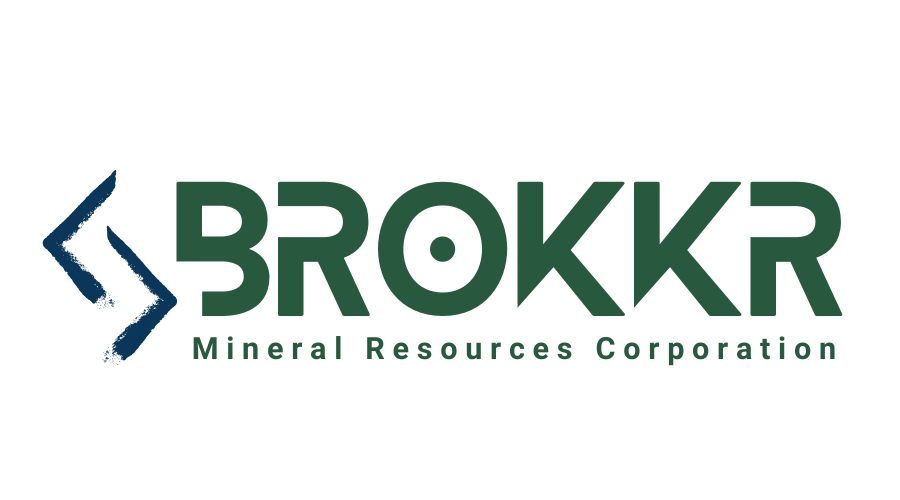
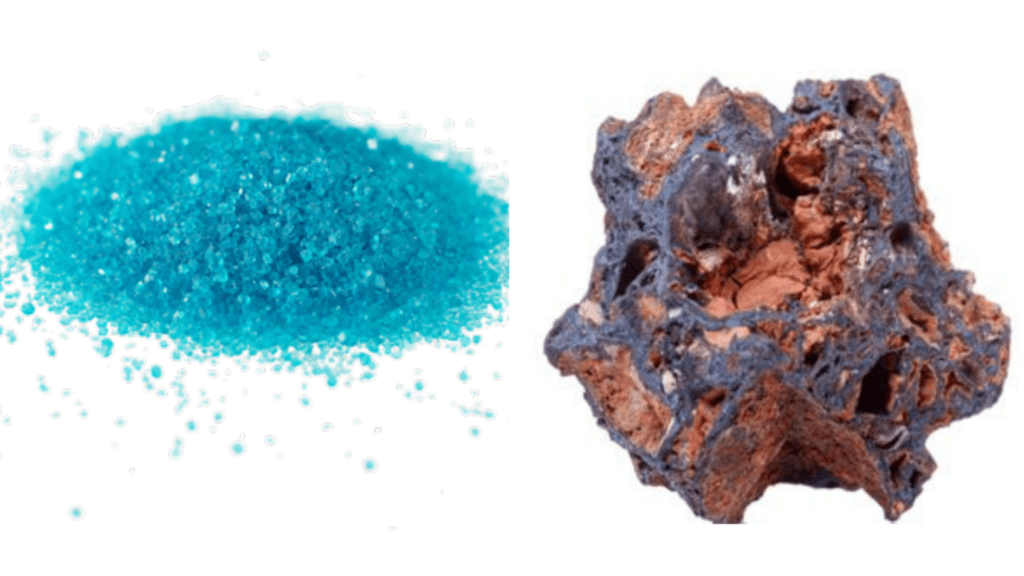

2024 Cohort / Burnaby, Canada
Brokkr Mineral Resources Corporation
The energy transition relies on critical metals like nickel, cobalt, and manganese, yet traditional extraction methods are carbon-intensive and harmful to ecosystems. Brokkr Mineral Resources Corporation offers a revolutionary solution by harnessing electrogenic bacteria to sustainably extract these metals from laterite ore. Their patented bioleaching technology uses microorganisms to release metal ions without harsh chemicals or high energy inputs, which are then purified through efficient, bio-inspired ion exchange resins. This innovative approach reduces emissions, minimizes waste, and enables recovery from low-grade deposits, advancing clean energy with a smaller environmental footprint.View Brokkr Mineral Resources Corporation websiteSDGs
13 - Climate Action 7 - Renewable Energy 9 - Innovation and Infrastructure
Verticals
Chemistry and Materials Climate Tech
-
Anodyne Chemistries combines biotechnology and electrochemistry to create low and negative emission chemicals and fuels.
Anodyne Chemistries
2023 Cohort / Burnaby, BC, Canada
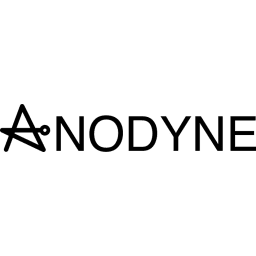
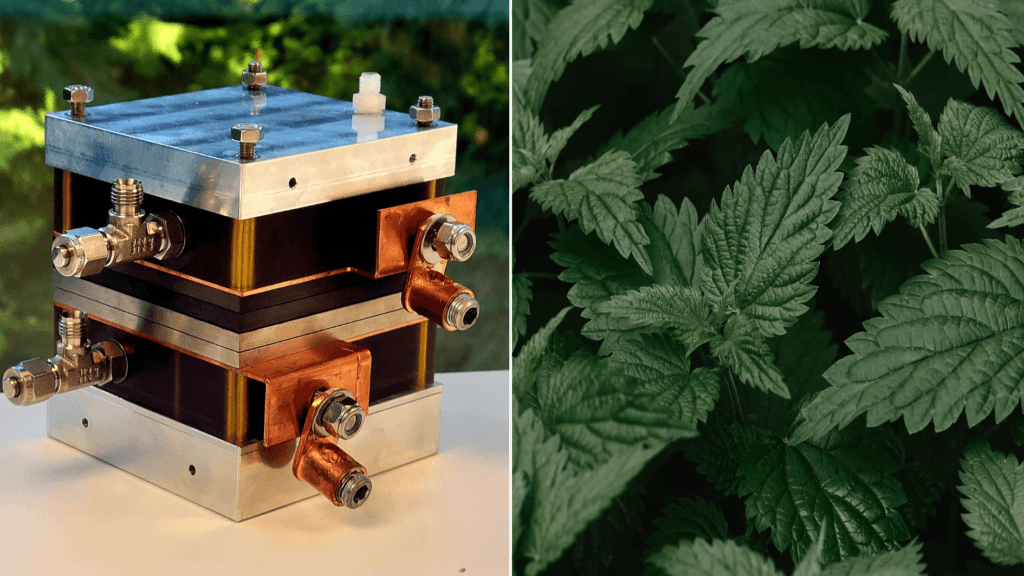

2023 Cohort / Burnaby, BC, Canada
Anodyne Chemistries
Anodyne Chemistries combines biotechnology and electrochemistry to create low and negative emission chemicals and fuels. This is accomplished through the use of nature’s catalysts, enzymes, to solve the chemical industry’s reliance on fossil fuels, replacing high temperature petrochemistry with a sustainable novel bioprocess called ‘bioelectric manufacturing'. Their core products are Anozymes, engineered enzymes that are designed for industrial synthesis, coupled with electricity thanks to innovative nanowires to form a new kind of biocatalyst that is faster, longer lasting, and more controllable than its wireless predecessor. Inside electrolytic cells, Anozymes operate at ambient conditions and convert captured emissions (feedstock) into carbon-negative chemicals (their first target is renewable methanol) with an emission-free process.View Anodyne Chemistries websiteSDGs
12 - Responsible Consumption 13 - Climate Action 9 - Innovation and Infrastructure
Verticals
Biotechnology Chemistry and Materials Climate Tech
-
Developed best-in-class anti-biofouling and antimicrobial surface coating.
ACatechol
2023 Cohort / Santa Barbara, CA, US
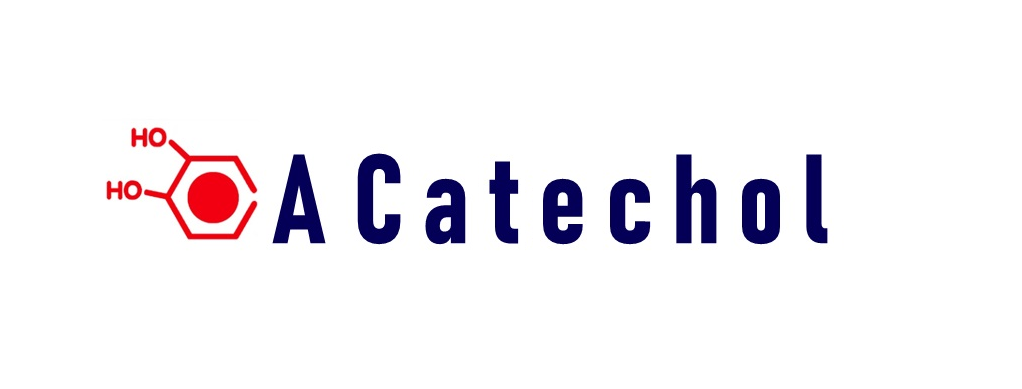
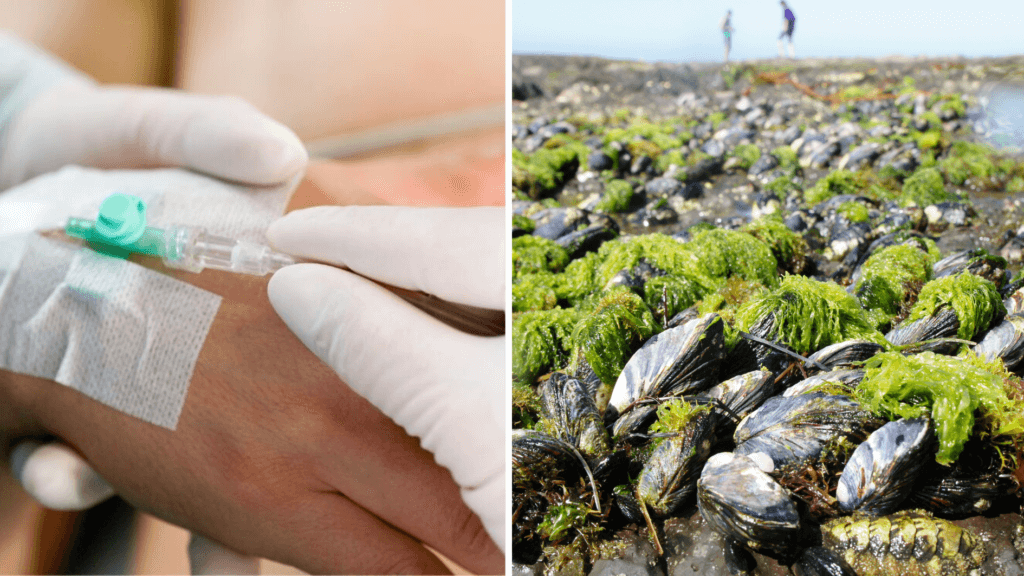

2023 Cohort / Santa Barbara, CA, US
ACatechol
ACatechol has developed the best-in-class anti-biofouling (biofilm-repelling) and antimicrobial surface coating that can be used for medical devices to prevent hospital-acquired infections, including catheters, which are the leading cause of sepsis and responsible for over 5 million global death each year. ACatechol’s technology is inspired by marine sessile organisms, such as mussels and demonstrates very promising results.View ACatechol websiteSDGs
11 - Sustainable Cities and Communities 12 - Responsible Consumption 3 - Good Health
Verticals
Chemistry and Materials Life Sciences and Medtech
-

2018 Cohort / Brazil
Nucleário
Nucleário has developed an innovative device to protect tree seedlings, which has been designed with large-scale tropical forest restoration projects in mind. Nucleário’s first product is a permanent crown area placed around the seedlings and inspired by the forest's leaf litter to protect the soil and to accumulate moisture, attracting biodiversity and increasing resilience. The product also facilitates the identification and monitoring of seedlings after planting. The company also developed an Ant Tower, an ecological alternative to combat leaf-cutting ants, without the use of chemical ant killers. These products increase the efficiency of tree planting, optimizing post-planting maintenance of the seedlings.View Nucleário websiteSDGs
13 - Climate Action 15 - Life on Land 17 - Partnerships for the Goals
Verticals
Conservation and Remediation
Read more about Nucleário on AskNature

